How to Choose the Best Coffee Maker for You – A Complete Guide to Brewing Types and Which Machine to Buy
After years of testing and research, we share everything you need to know to choose the best coffee maker for your home
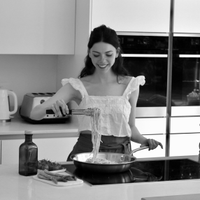
Laura Honey

- Types and brew methods
- Drip coffee
- Espresso machines
- Best automatic coffee machines
- Best single-serve
- Best moka pots
- Best French press
- Best pour over
- Best cold brew
- Best iced coffee makers
- Other considerations
- Price
- Features & functions
- Coffee grinders
- Best milk frothers
- How we test
- Testing team
- FAQs
As a kitchen appliance expert, the question I hear most often is 'What's the best coffee maker?' It seems simple enough, but the answer varies depending on what kind of coffee you like to drink.
Most of us mean the best drip coffee maker when we talk about coffee makers. It's not surprising – easy drip coffee has been a staple in American homes since the 1960s, and it's hard to find a diner in the country that doesn't have a jug of filter coffee ready and waiting, any time of day.
Personally, I’m a cappuccino girl, and since my mornings are always a rush, I swear by the best espresso machines. But I live with a barista, who is all about strong black coffee, so there's always a French press on our table, too.
Over the last year, with the help of my team of expert product reviewers, many of whom have been testing coffee makers for Homes & Gardens’ for nearly a decade, I've tried coffee makers of all shapes, sizes, and brewing methods – from premium espresso makers over $1,000 to cheap pod machines – and attended barista training events tp build on my knowledge.
Our unanimous favorite is the OXO Brew 8-Cup Coffee Maker, which brews simple, delicious coffee, but if you want to look further, I’ve written this guide to deep dive into the different brewing styles so you can find the best coffee maker type for you. And then, I’ve given you thoroughly tried and trusted luxury and budget options for each category.
I’ll also help you work out whether you need extras like grinders and steam wands, or just a simple pour-over pot. Throughout, I will explain space, time, and budget constraints that may impact your decision. What I certainly won't be overlooking is convenience – good coffee doesn't have to take lots of effort, but sometimes it can.
Now you are primed, just tell me your coffee order – I’ve got the perfect fit for your kitchen.
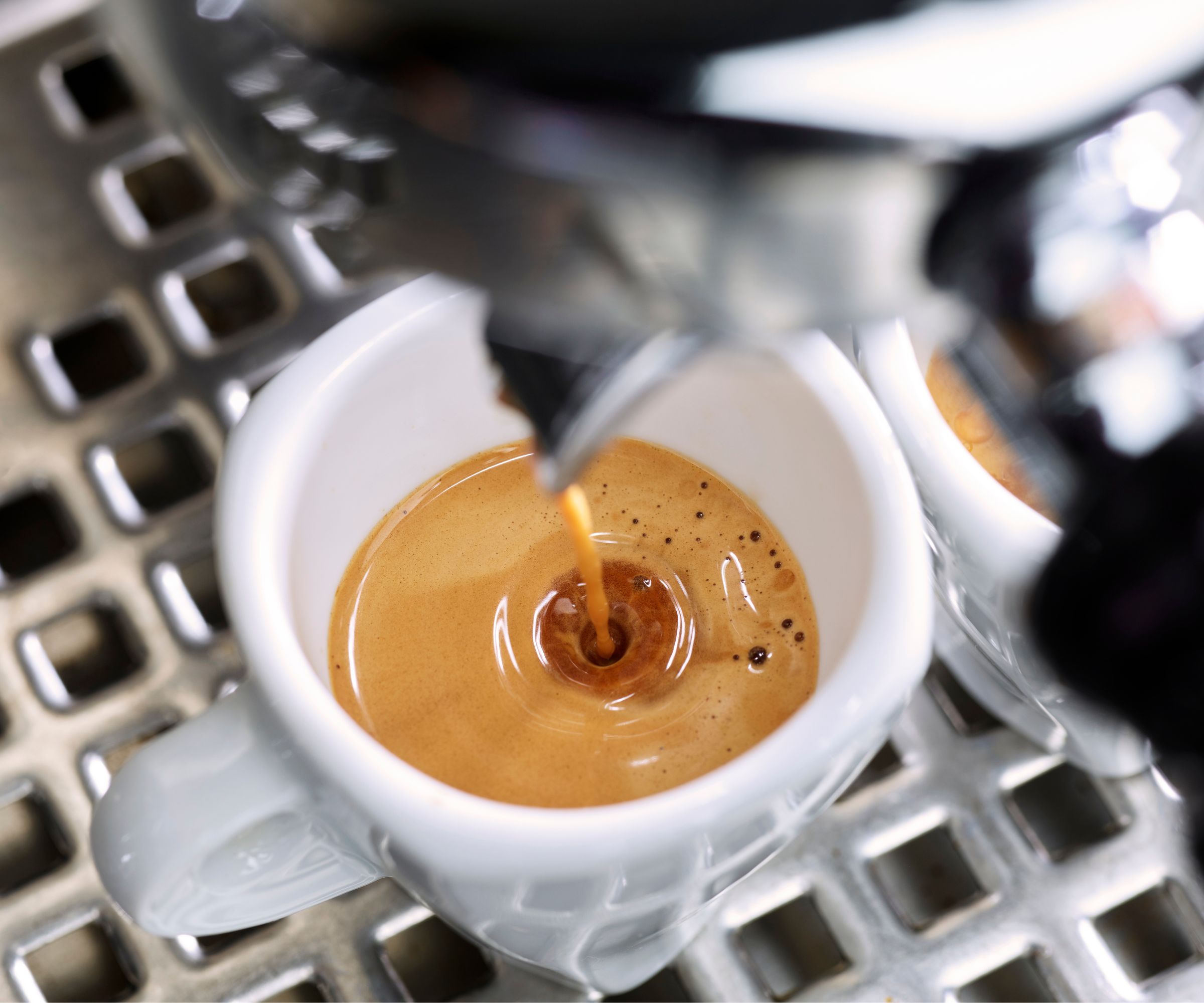
Comparing coffee maker types and brew methods
Each coffee maker type has a different brewing method, which affects the taste of your drink. Pressure, extraction time, water contact, and even the shape of filters all impact the final flavor. And, while two different coffee makers might offer a similar end result (espresso makers and moka pots, for example), the process, level of effort required, and amount of kit needed could be at opposite ends of the spectrum. This table demystifies the differences, fast.
Type | Buy it if: | Cons | Cost |
|---|---|---|---|
Drip coffee | You want large, consistent quantities of light coffee | Should be brewed in big batches | $$ |
Semi automatic espresso machine | You want fresh, professional-level speciality coffee, espresso and lattes | Time-consuming; fiddly; easy to get wrong | $$$ |
Fully automatic espresso machine | You want quality coffee at the touch of a button | Expensive | $$$$ |
Single-serve | You want fast, cheap, automatic coffee | Plastic pod waste, lower quality taste | $$ |
Moka pot | You want high-quality, strong espresso-like coffee and a compact maker | Can’t set it and forget it | $ |
French press | You want strong, quality coffee that requires little space | Brew time and clean up | $ |
Pour-over | You want light, flavorful, but cheap coffee, and enjoy a process | Prep time and clean up | $ |
Cold brew | You want sweet, smooth, refreshing coffee that is less acidic | Long brew time | $$ |
| Row 8 - Cell 1 | Row 8 - Cell 2 | Row 8 - Cell 3 |
Coffee maker types – in depth
Here, I explain how each coffee maker type works, and pick out our most highly-rated buys.
Drip and filter coffee
Drip coffee, also known as filter coffee, is the nation's favorite brewing style. The smooth, light, delicate flavors are easy to sip all day long.
Pros of drip coffee makers include their sheer simplicity. It's easy to learn how to make coffee using a drip maker, so it is perfect for beginners and those who don't want to have to complete a PhD to use their machine. They are a breeze to rinse and maintain, too.
If you want to get full flavors from your filter coffee maker, you need to pair it with one of the best coffee grinders. This can bump up the price, but if you care about specialty coffee, it's worth it.
Cons of drip coffee makers are that they are often big and they make singular, very simple coffee. There's no intense espresso or creamy cappuccinos here. If that's your style, scroll down to see the best espresso machines.
Take a deep dive into the best drip coffee machines in my dedicated guide. Or shop my three favorites below.
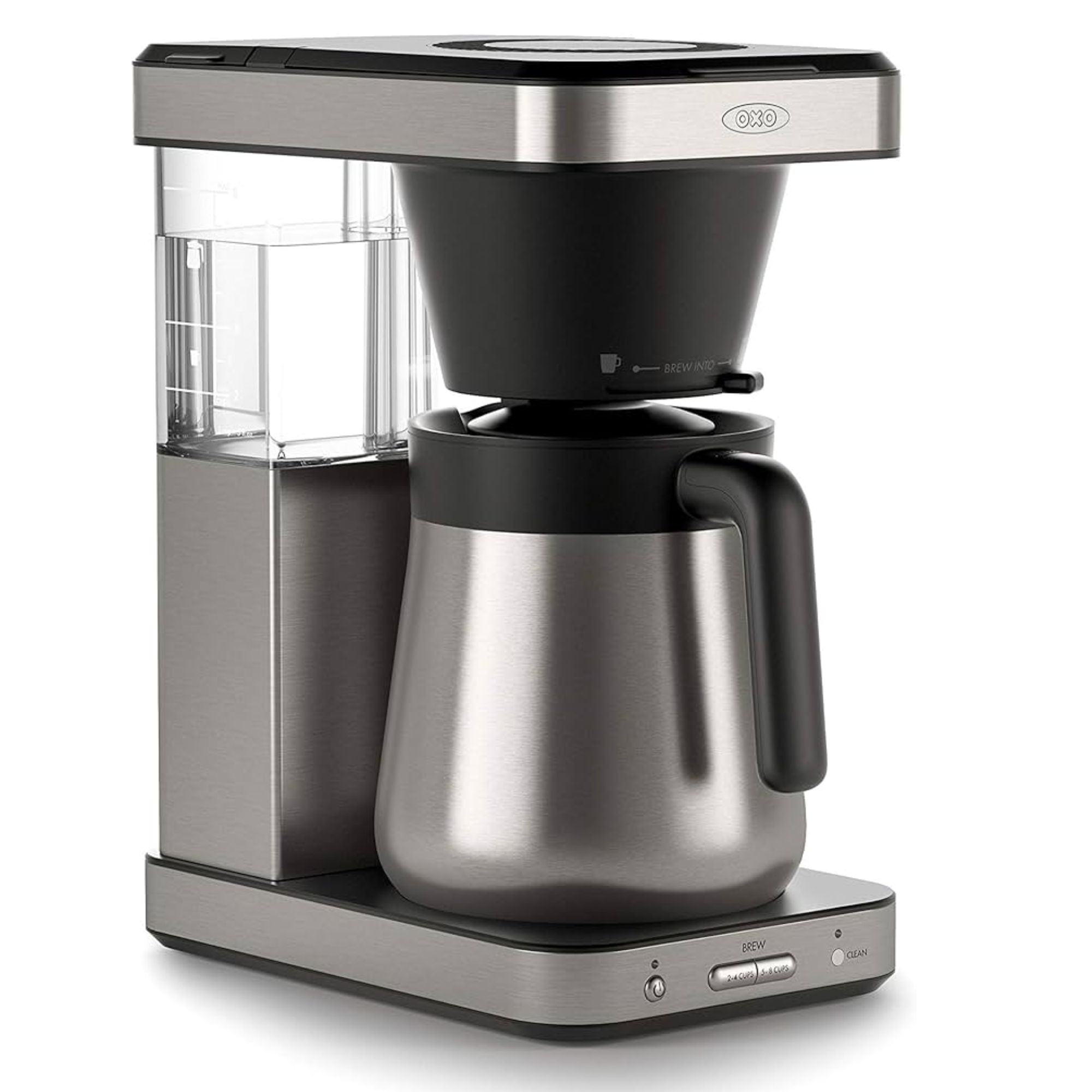
This coffee maker can brew anything from a single shot to a whole carafe of coffee. It's easy to use and one of the most affordable models on the market.
Our full Oxo Brew 8-Cup Coffee Maker review.
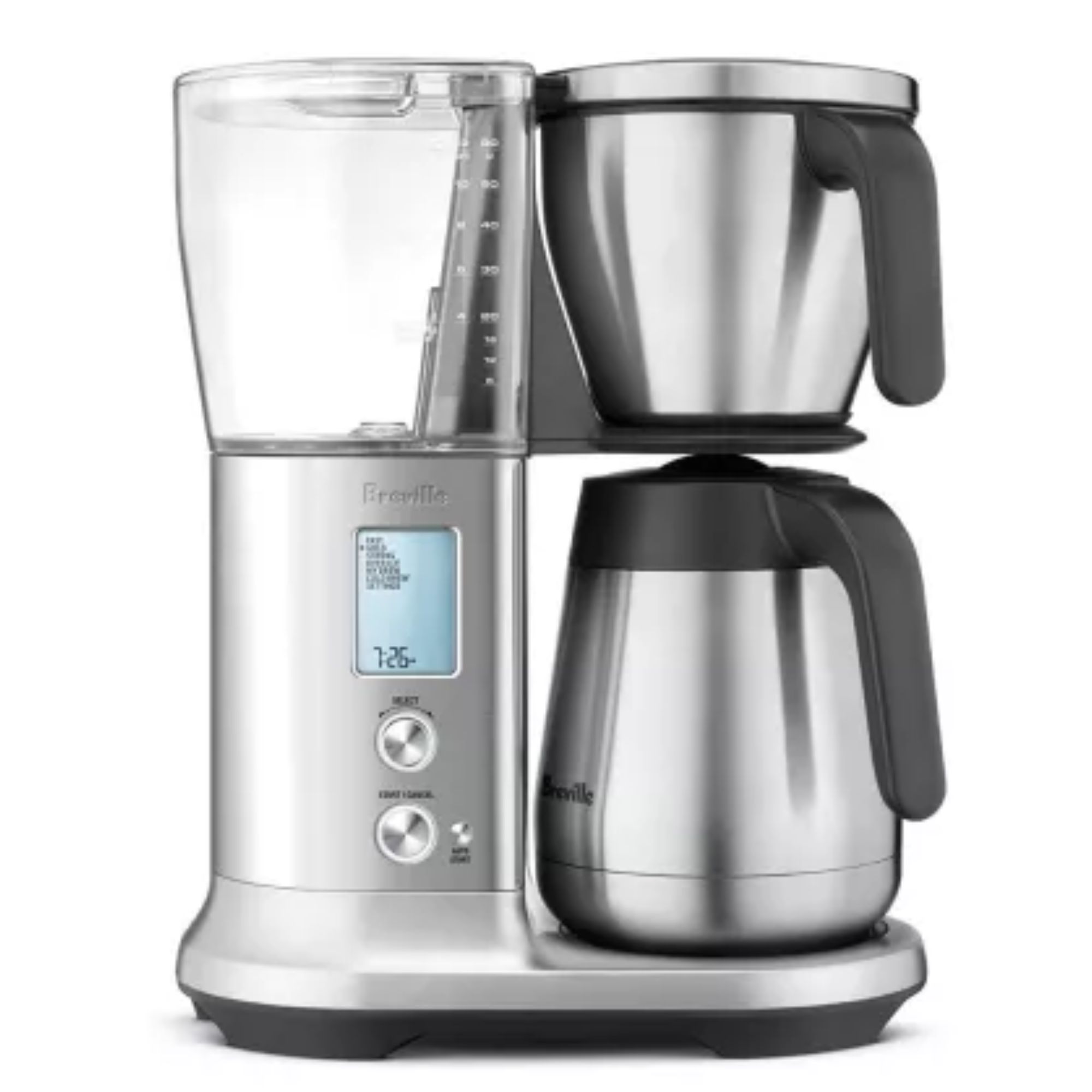
Equipped with six brew modes and a 12-cup capacity, this machine means business. You can adjust brew temperature, bloom time, and flow rate to customize your cup of coffee.
Our full Breville Precision Thermal Brewer review.

This sleek machine comes in a wide variety of colors, from pastel pink to matte black, to complement any kitchen color palette. Oh, and it makes excellent coffee too.
Espresso machines
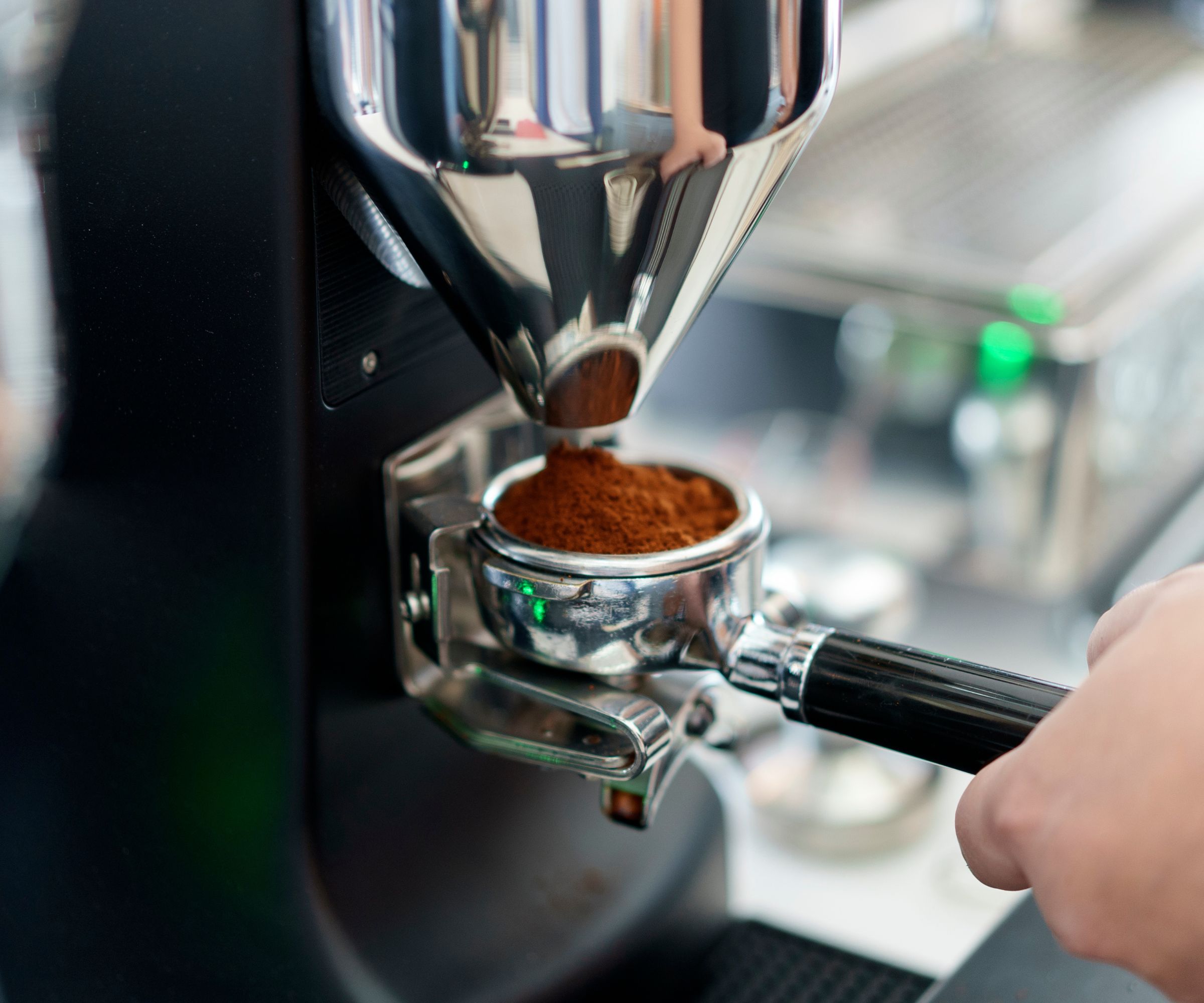
If you've ever admired the set-up in your local café, you've probably been looking at one of the best espresso machines. Once reserved for baristas and coffee connoisseurs, they now grace homes around the world.
Pros are that they make rich, intense shots of coffee, as well as café-quality lattes and cappuccinos, as they almost always include a steam wand. Many also have an integrated grinder, so you can steer the whole process from bean-to-cup. You can go manual for full control, or choose higher levels of automation for a hand – the top picks directly below are semi-automatic, so pressure and temperature are sorted for you.
Cons are that espresso machines are fairly large and they can get expensive, ranging from $500 to over $1,500 in price. They can also be a little complicated to operate if you don't go for an automatic model. Models are becoming increasingly simpler and user-friendly, but if you're a total beginner and want coffee at the touch of a button, scroll down to the best automatic coffee machines instead.
Read more in my best espresso machines guide, or shop my top three below.
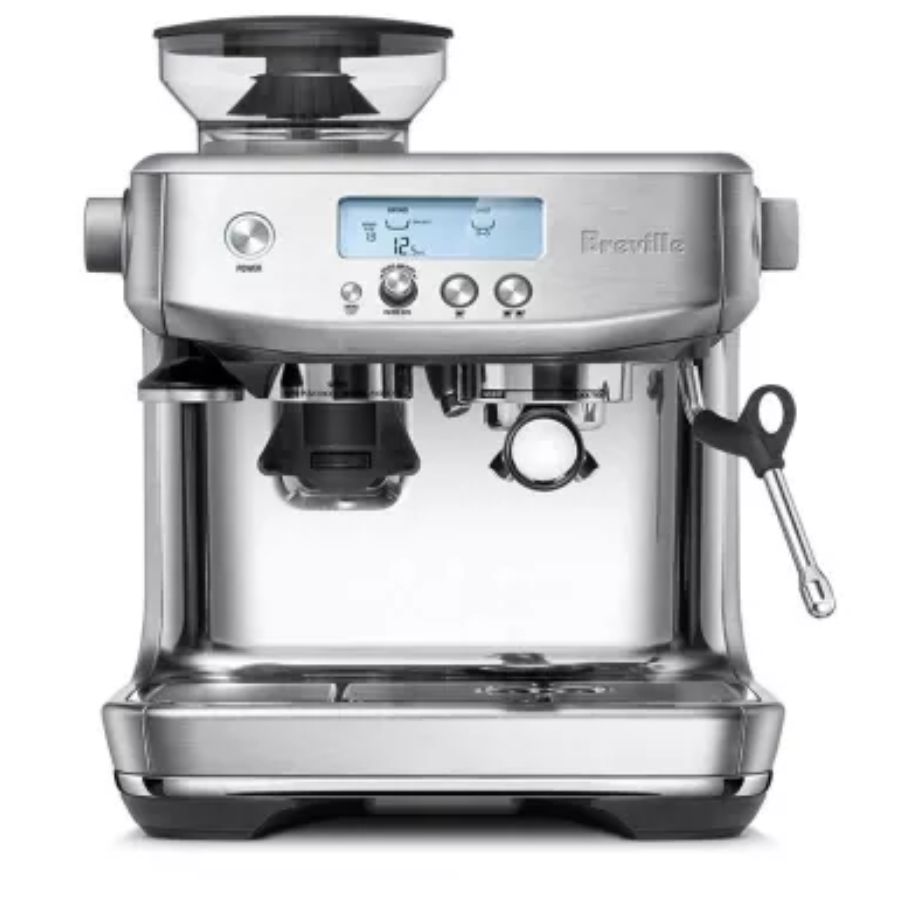
As an espresso machine, this is hard to fault. It's intuitive to use, but has the technical ability to cater to a sensitive coffee drinker's palate. It might be big and at the top end price-wise, but it's worth it.
Read our Breville Barista Pro review.
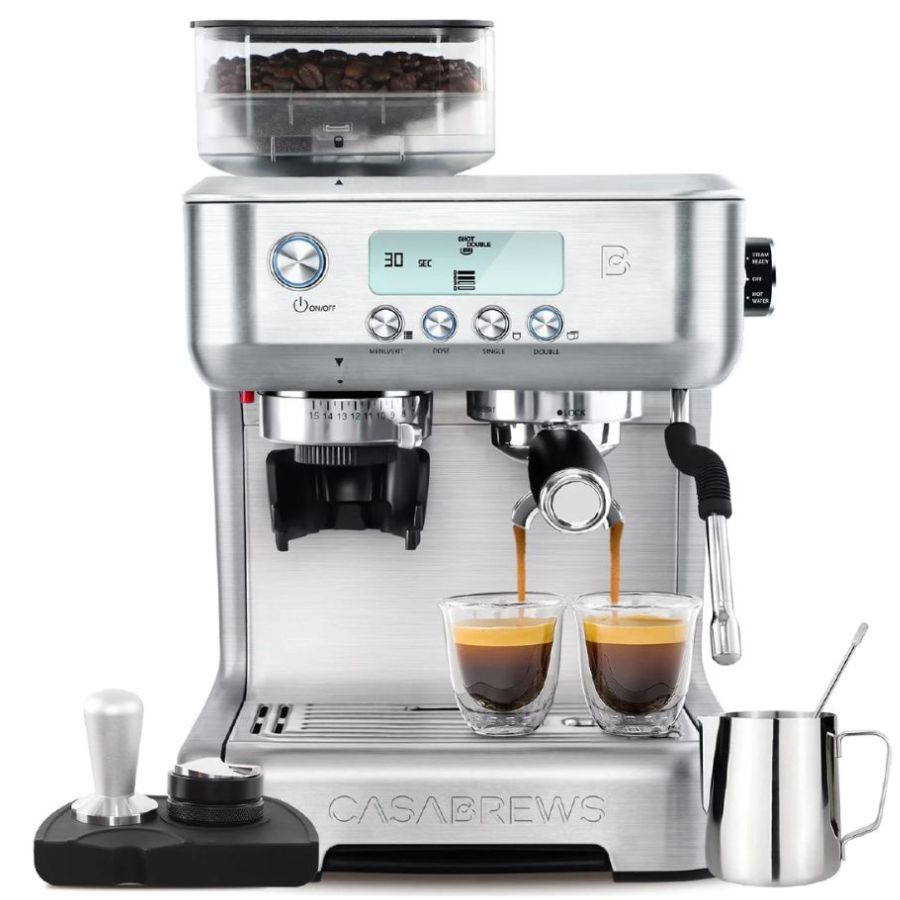
At around $200, the TikTok-famous Casabrews wins when it comes to value. I found the steam wand really intuitive. It's quick and effective, but it doesn't come with an integrated grinder, so you'll need to buy that separately.
Full review coming soon.
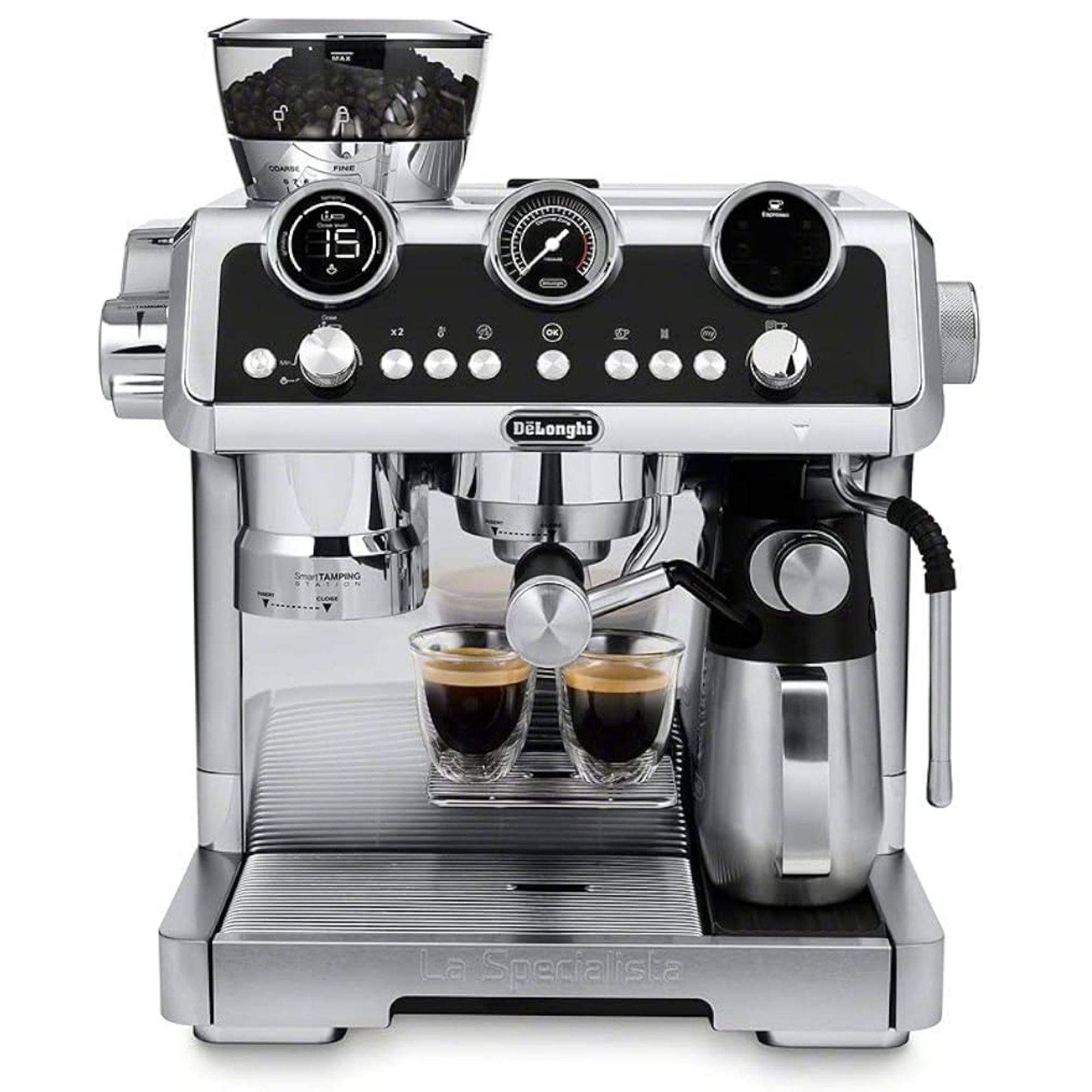
Looks don't deceive with this top-grade machine. Alongside incredible espressos, this can make cold brew. It has incredible capacity, but a large price tag to match its specs.
Best automatic coffee machines
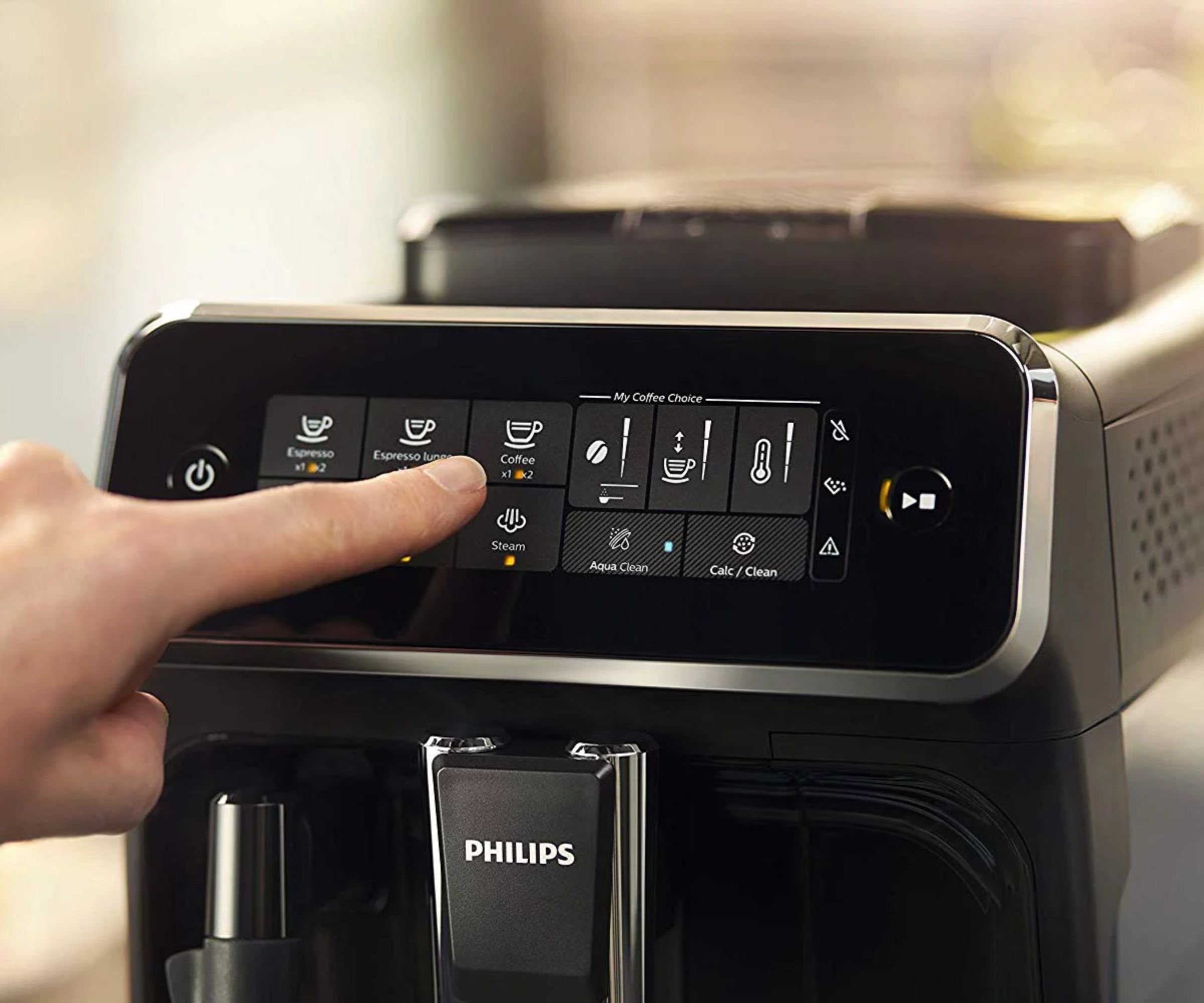
If you like the finer things in life, a bean-to-cup coffee maker might be just what you're looking for. These automatic espresso machines are specially designed for beginners or anyone who wants a quick cup of coffee without much effort. Simply add the beans, place a cup underneath, and let the machine handle the rest.
Pros include foolproof, faultless coffee, with zero fuss – the perfect option for busy mornings. Load your beans, and the machine does the rest; from grinding and measuring the right amount of coffee, to frothing milk to make long drinks. Many have pre-programmed drinks to choose from, but others may also allow you to save bespoke recipes.
Cons are that, of course, all of this automation comes at a cost, and they can be rather large. A quality bean-to-cup machine usually starts around $700 and can go to over $2,000. While the upfront price may seem high, they’re durable and can save you money in the long run, especially with reputable brands like the ones below.
See our top-rated bean-to-cup espresso machines below.
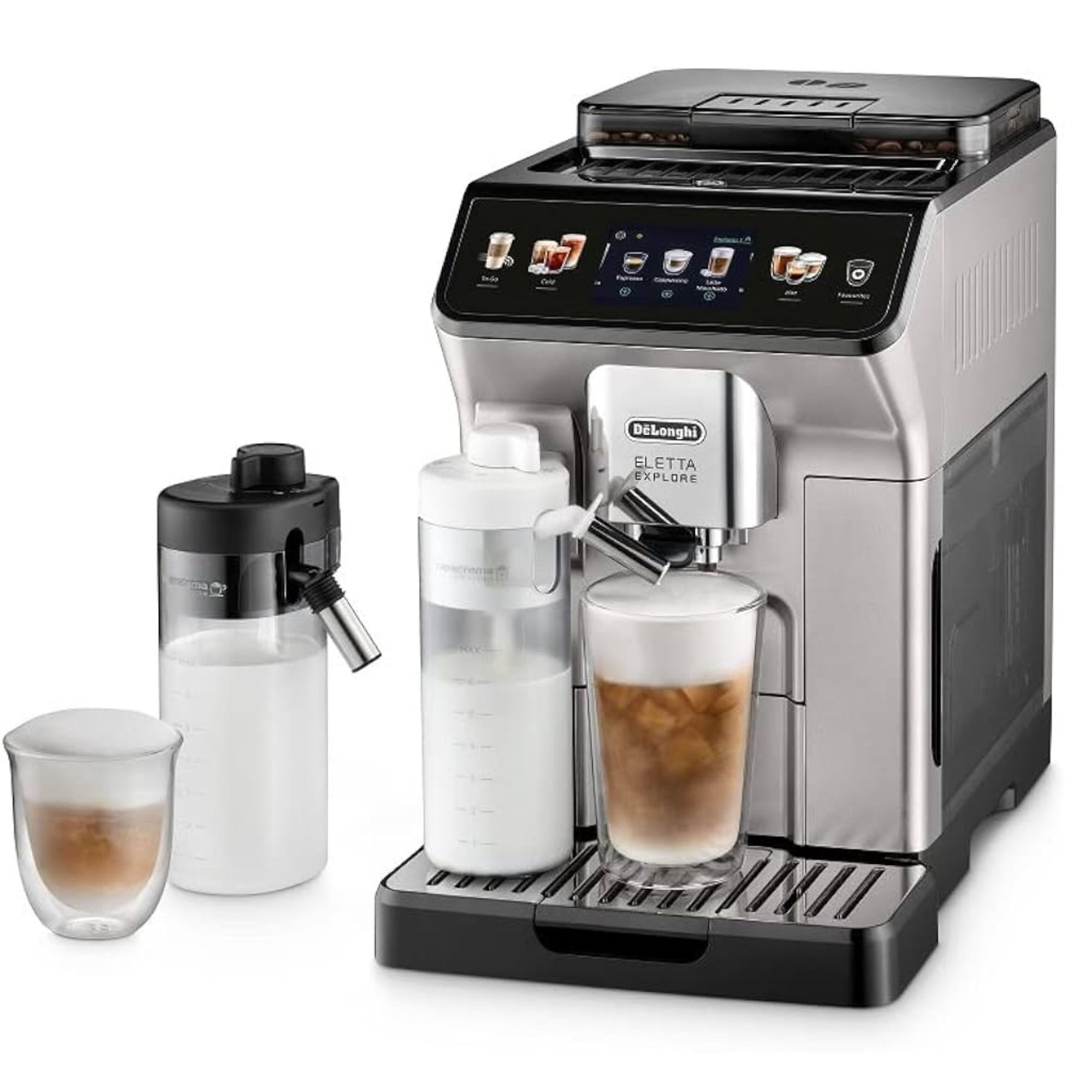
De'Longhi produces some of the best automatic coffee machines we've tested. This sleek, Italian-made model has over 52 coffee styles to choose from, a colorful touchscreen, and an excellent milk frother. With self-cleaning features and friendly instructions, it's a joy to use.
Our full De'Longhi Eletta Explore review.
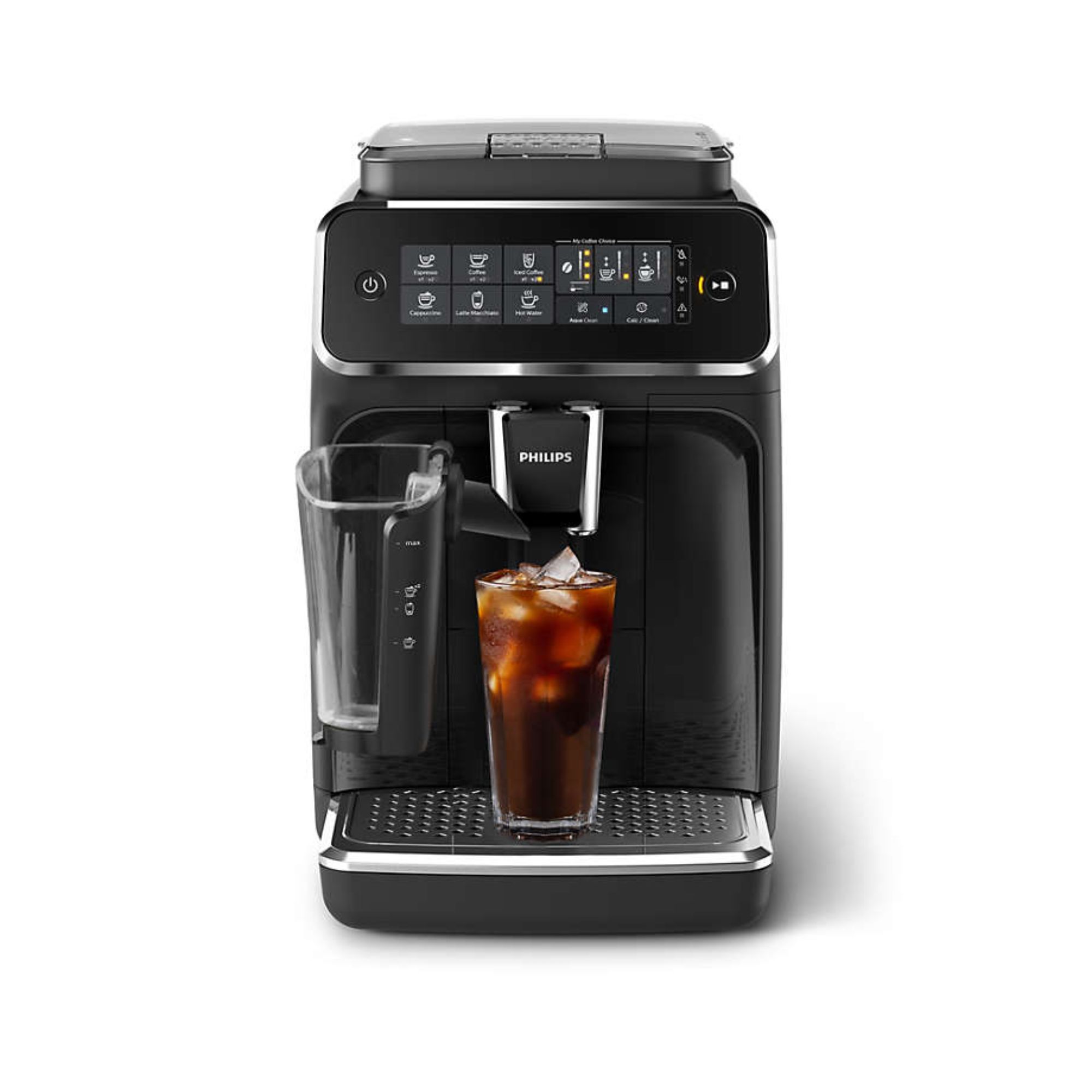
Uniting quality and value, this coffee maker can do it all. It grinds, brews, and serves your coffee at the touch of a button. You'll be able to make delicious coffee for all the family, at a lower price than our best choice overall.
Our full Philips 3200 Fully Automatic Review.
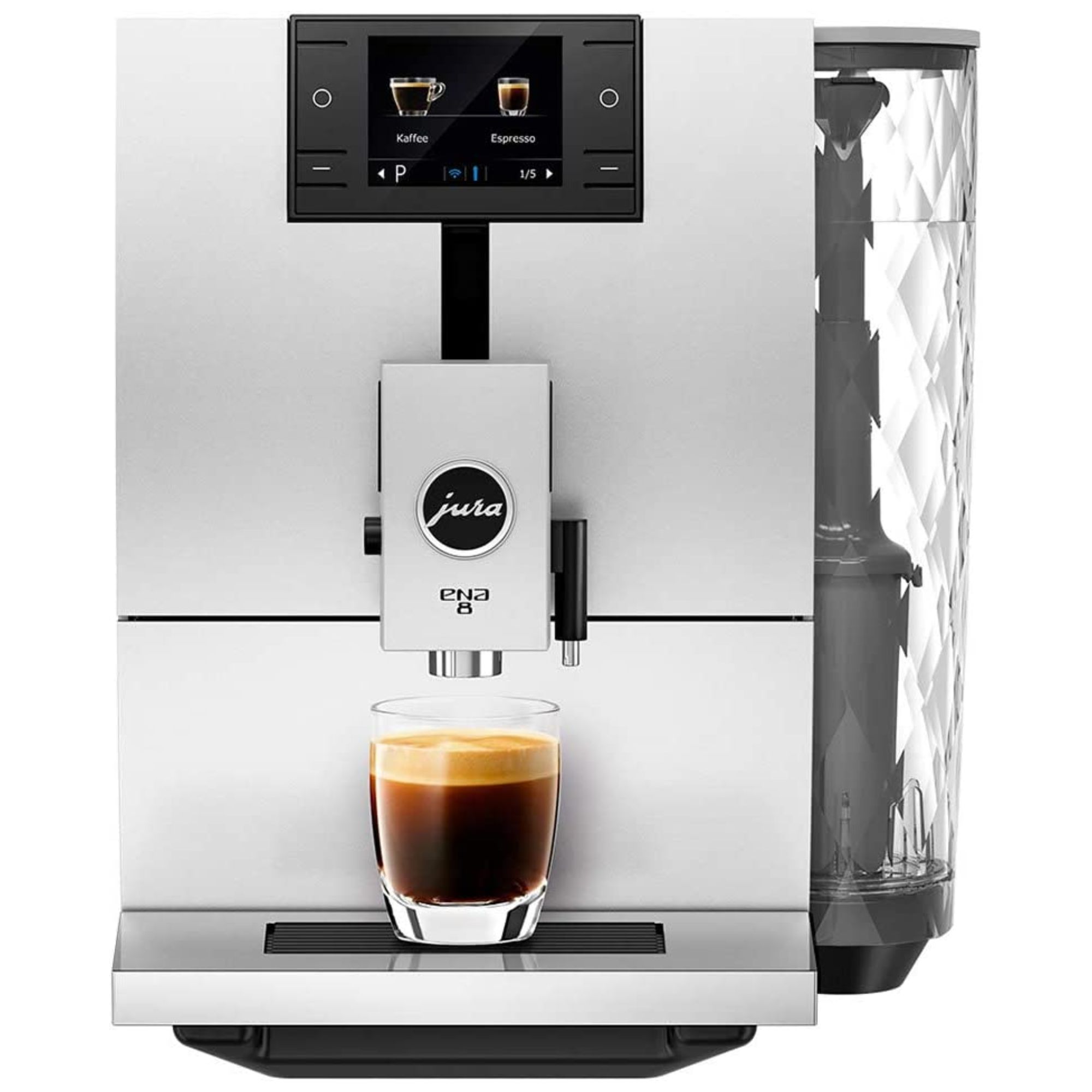
With 10 different coffees at the press of a button, this quiet coffee machine is seriously impressive. It delivers a consistently premium taste to rival the trendiest coffee shops. Jura's ENA J8 model features a sweet foam setting for effortless café-style treats, too.
Our full Jura ENA 8 review.
Best single-serve coffee makers
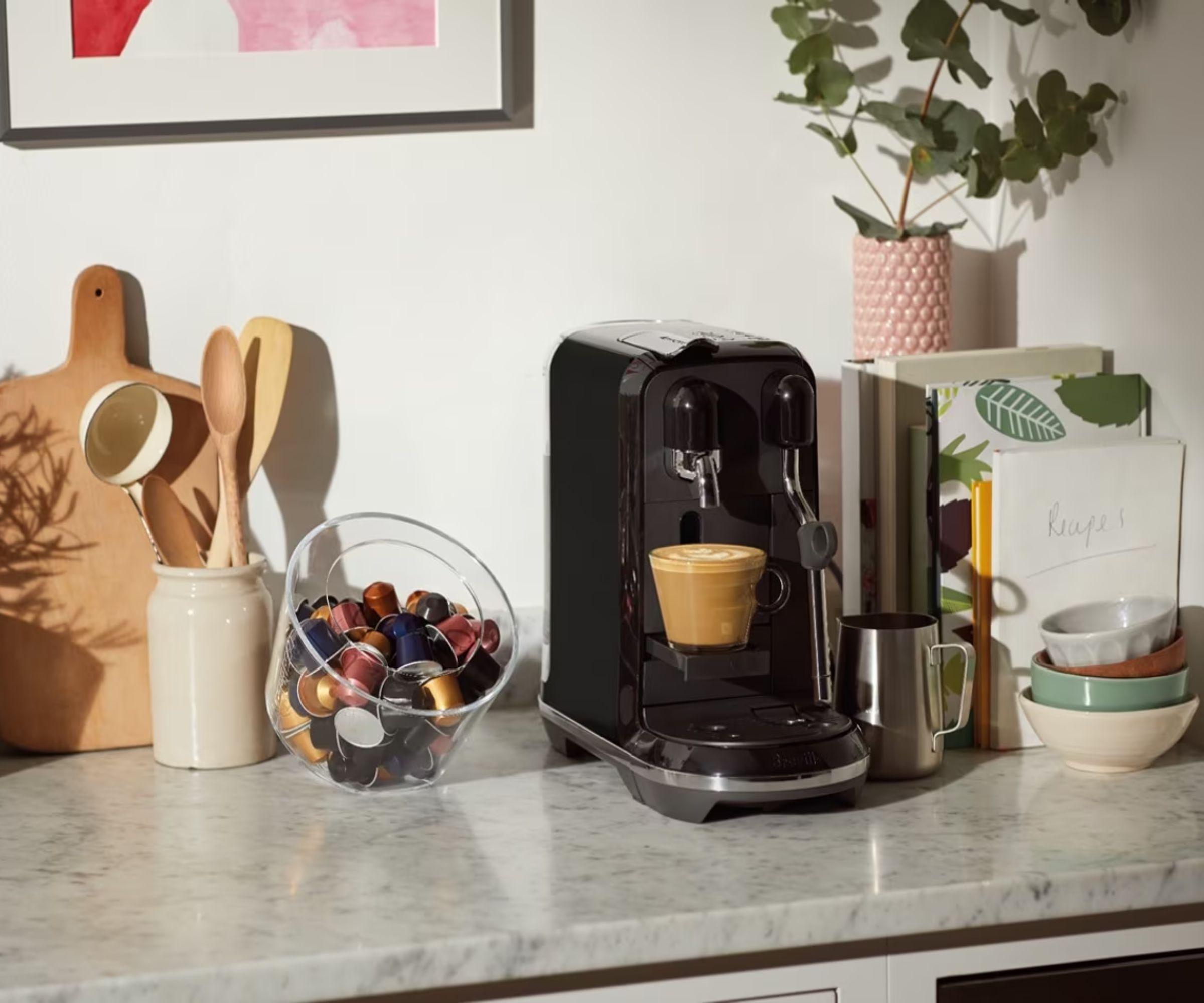
The best single-serve machines use pods or capsules to create simple but delicious coffee.
Pros are the speed, ease, and convenience with which you can make good coffee, and they are ideal for small spaces. The results are consistent and, as well as espressos, they can be used to make teas, hot chocolates, and a range of drinks you find at your favorite take-out. Look out for collaborations with the likes of Starbucks and Dunkin.
Cons are that while they are affordable to buy (priced between $100 to $300 max), the capsules can be expensive to restock, though some of the big brands like Nespresso and Keurig offer subscribe-and-save, along with discounts on machines. They don't offer the most sustainable way to enjoy coffee either. Eco-conscious users should seek out B-Corp-certified machines that work with compostable capsules, like the illy ESE and Grind One Pod, to minimize waste. Some brands also offer recycling schemes for spent pods. And, some models are compatible with refillable pods that can be used with fresh grounds for a taste upgrade.
Shop my top three single-serve coffee makers below.
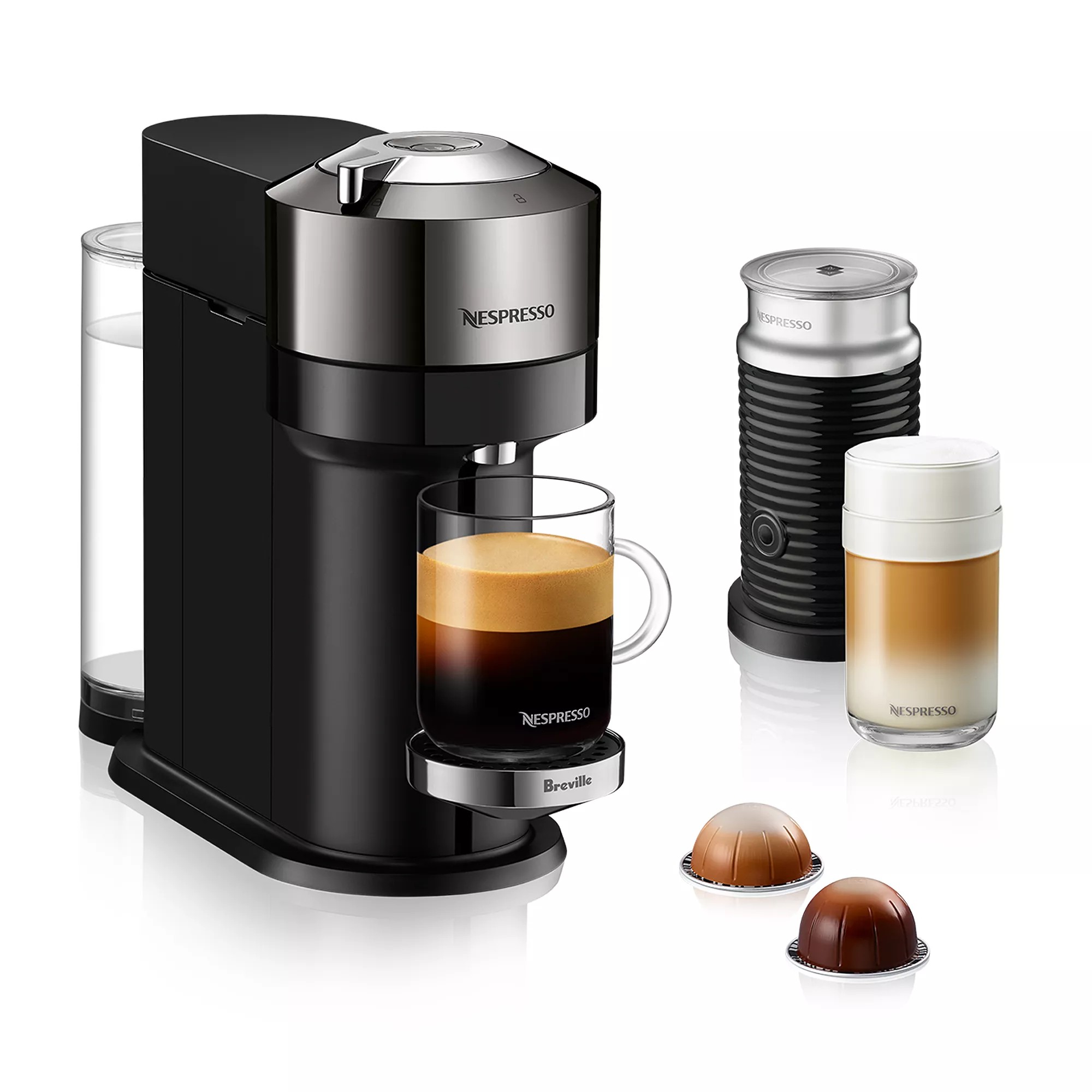
The Nespresso Vertuo Next is sleek, stylish, and perfectly practical. After years of using all of the best Nespresso machines, our experts decided that the Nespresso Vertuo Next deserves the top spot. It's versatile, easy to use, and really good value.
Our full Nespresso Vertuo Next review.
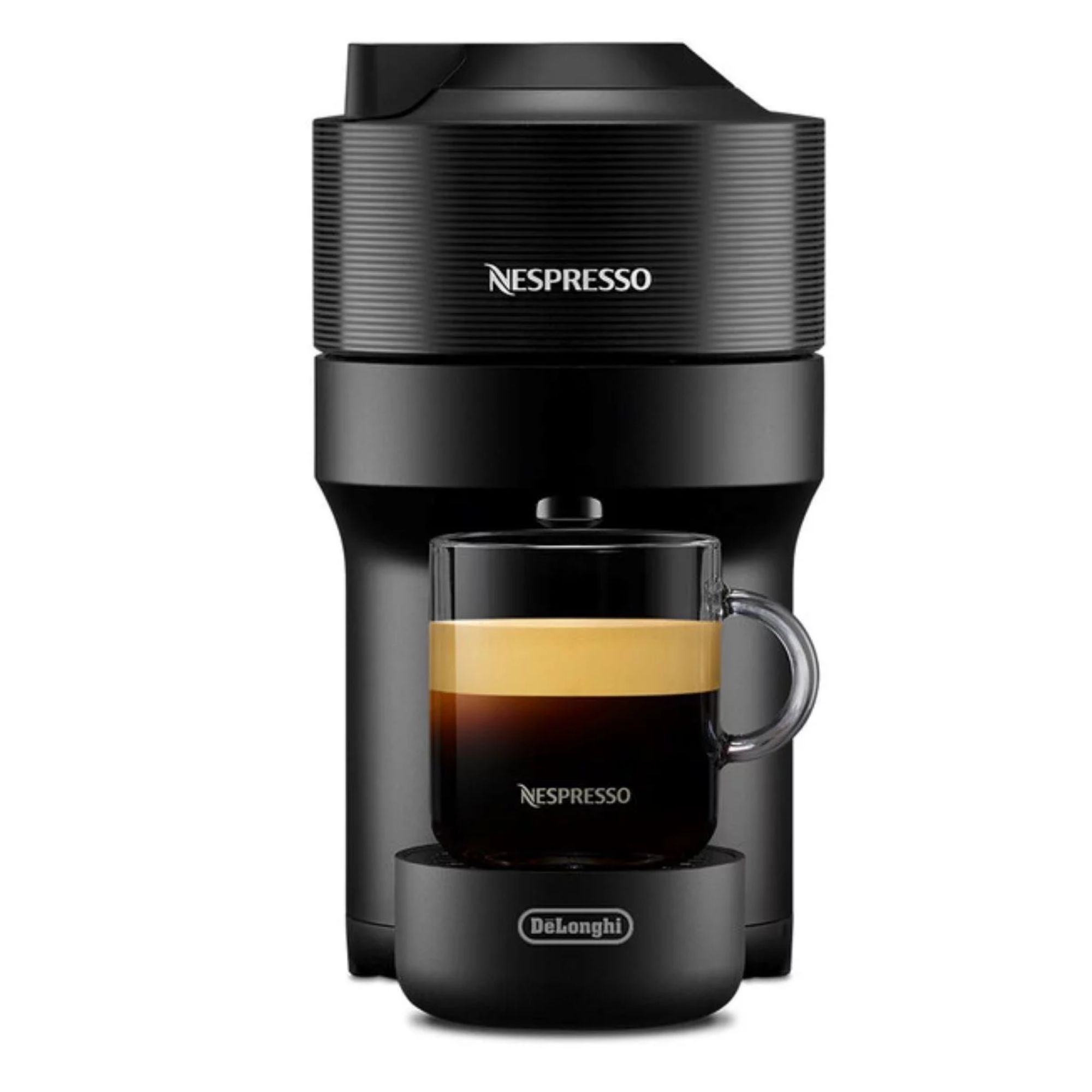
In our expert opinion, this is the only cheap single-serve pod machine worth buying. We tested it against other brands such as Keurig, but we preferred the signature Nespresso coffee. You're just sacrificing on size; it's not ideal for big families.
Our full Nespresso Vertuo Pop review.
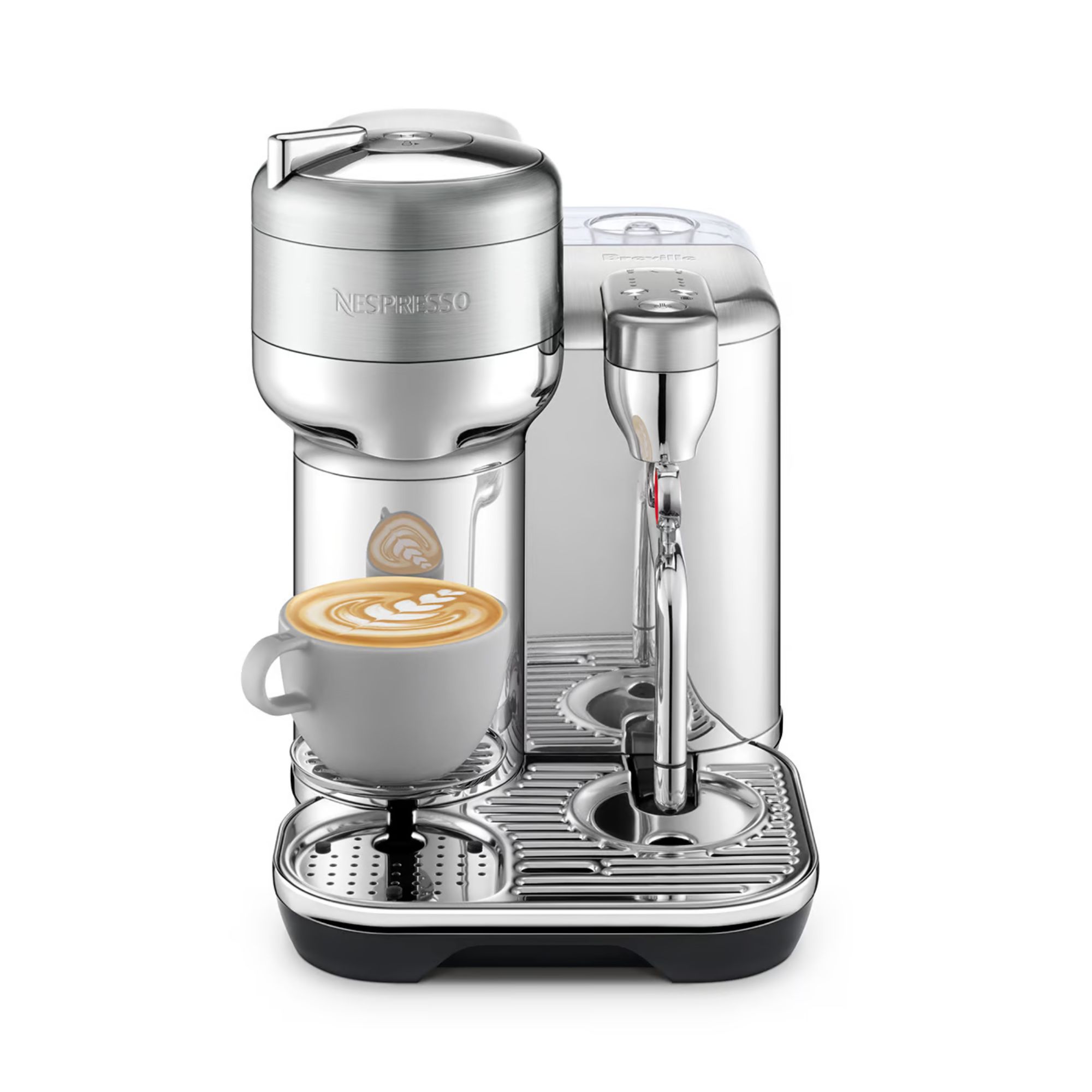
When I mentioned luxury, this is what I had in mind. The smart, milk-frothing machine is championed by none other than David Beckham. It's a splurge, so consider shopping for it during sales if possible.
Our full Nespresso Vertuo Creatista review.
Best stovetop or moka pot

Step into nearly any Italian kitchen, and you’ll find a moka pot perched on the stovetop, usually a trusty Bialetti, patiently waiting to brew the next cup of rich, velvety coffee. In fact, I once read a line in my favorite Italian cookbook: 'At the bar, we drink espresso. At home, we make moka.' After traveling across Italy, from Florence to Naples, I discovered how true that is.
Pros are that you get all the taste of espresso, but delivered via a much more affordable stovetop appliance. The best moka pot makes such smooth, intense, and rich coffee that most people can't tell the difference. It is a small-space and small-budget winner too, with pots costing $30-130. Many are Italian-made and ooze the country's renowned design merits. Dolce & Gabbana even put their name (and print) on a range with Bialetti.
Cons are that they will only make one to two small cups of black coffee. And while the retro aluminium models are gas-stove friendly (making them great for camping too), you will need to look out for a stainless steel option if you have an induction stove.
Find out more in our guide to the best moka pots, or shop my top picks below.

The iconic Moka Express remains unbeaten, both in performance and charm (I have a soft spot for the little handlebar-mustached logo – a tribute to Renato Bialetti, the son of Alfonso, who invented the first Moka pot in 1933).

Not every moka pot works on induction hobs, which is why Bialetti has made one to work across a range of stoves. It's quiet and quick, but without the traditional silhouette.
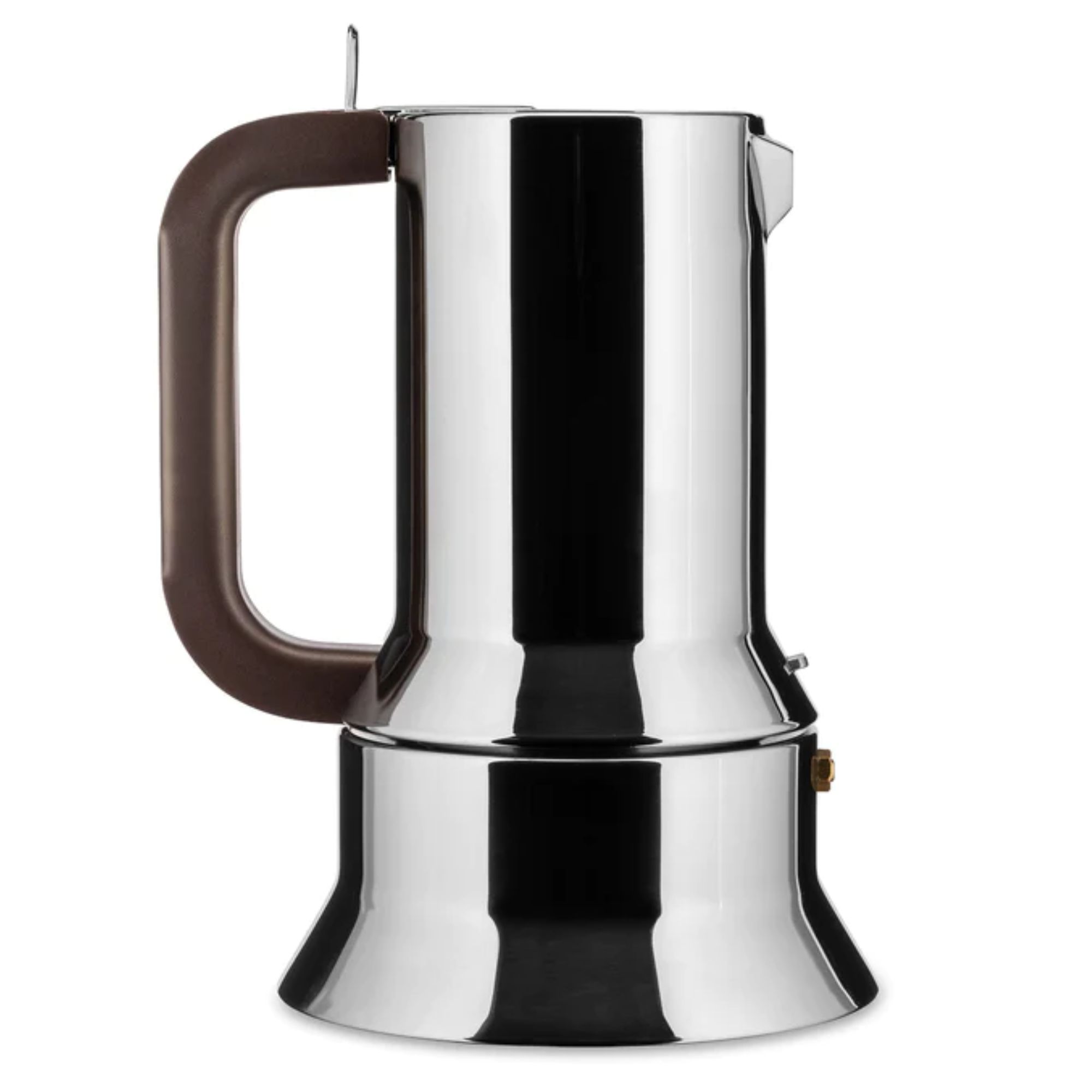
Alessi does luxury like no other. Their sleek, premium moka pot is durable and weighty. I love all of their modern designs, but they cost ten times the price of Bialetti's.
Best French press
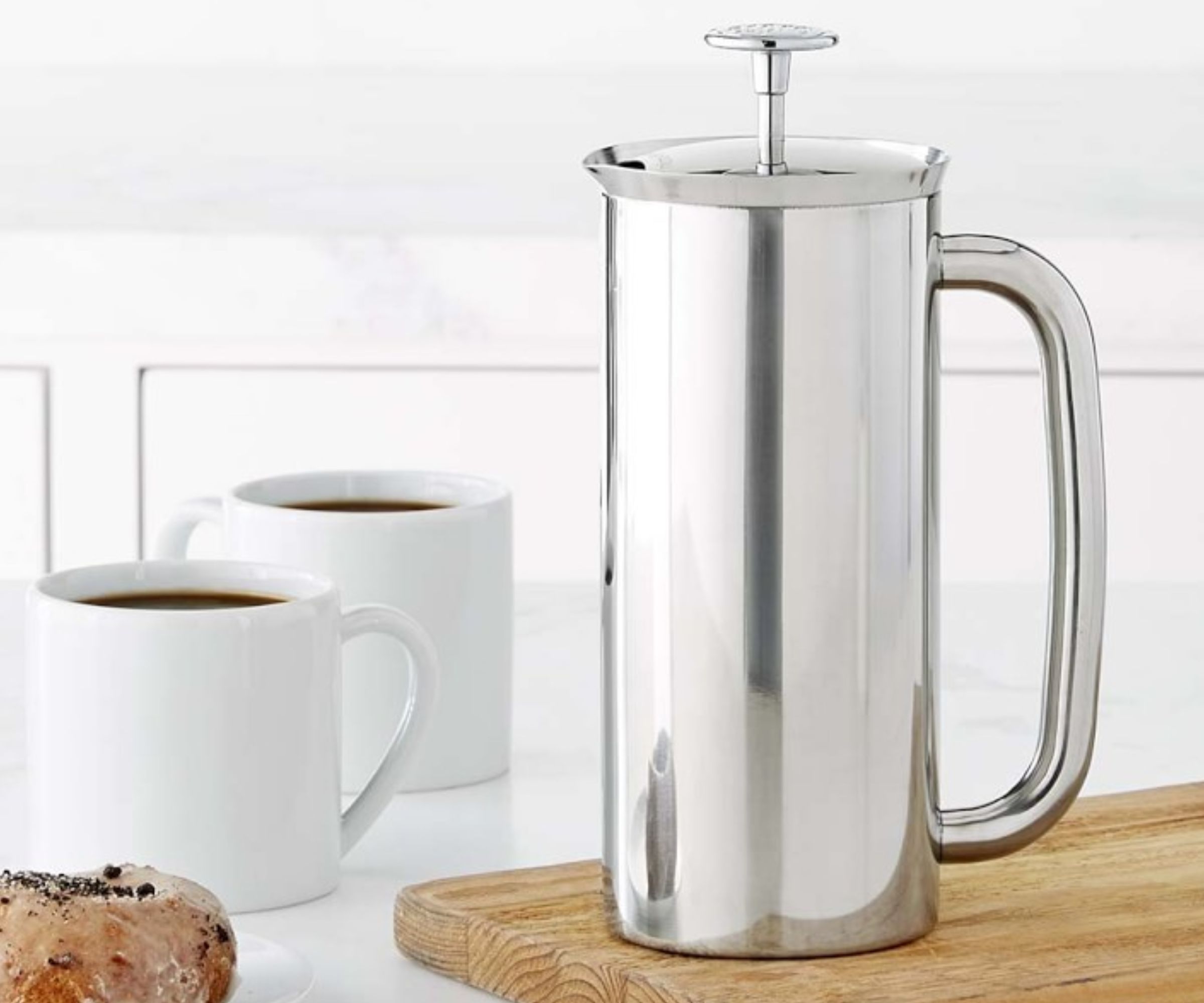
As you might have guessed from the name, French presses are another European staple. You've probably seen them sitting on a wooden tray next to a croissant in an Instagram picture of a Sunday morning ritual. The process is slow and mindful, delivering multiple cups of rich, delicious coffee.
Pros are that French presses deliver some of the strongest coffee, a surprise considering their small footprint. The process draws out more earthy and nuanced notes, appreciated by coffee connoisseurs and those in need of a caffeine hit. That said, it is still one of the easiest types of coffee you can make. Sure, there is nuance to the timings and grind size, but the basics can be mastered by anyone. Clean-up is simple, too. Finally, it is a very affordable type of coffee maker. I wouldn't suggest paying much over $100 for a good one (even for a double-walled option for better insulation), but they can be as little as $20.
Cons are that the flavor profile is often described as acidic and bitter, which won't appeal to everyone. However, being so small and affordable, it's the kind of maker you can take a risk on if you want to try another coffee-making method and you can choose triple-filtration versions for a smoother taste. They are generally better suited to smaller volumes of coffee, but you can get models that offer eight to ten small cups. Just be very careful with the carafe you choose. I've smashed more glass carafes than I care to admit, so if you know you're clumsy, make sure to invest in a stainless steel model.
Shop my favorite French press coffee makers for every budget.
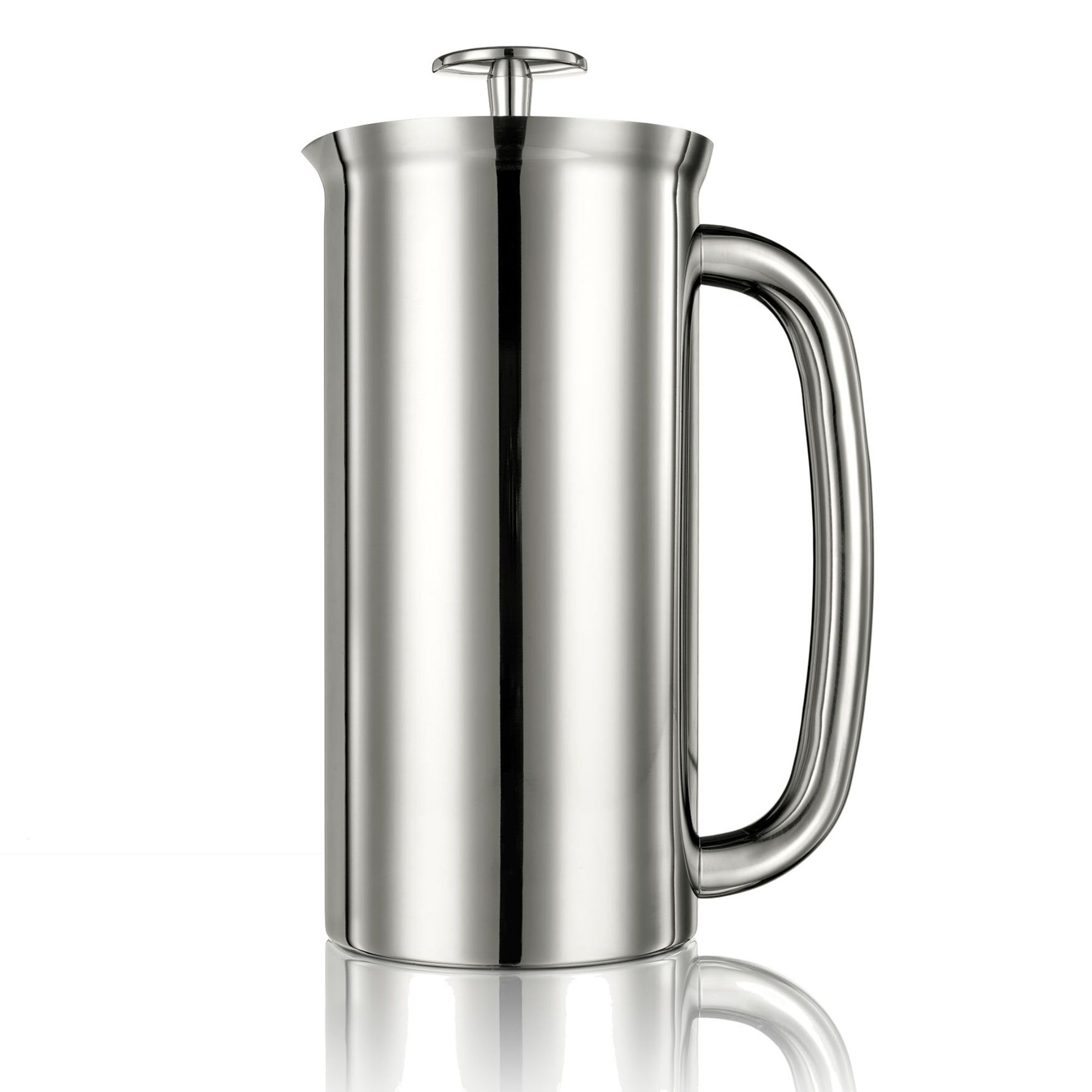
This boasts a substantial, stylish design. It will make the best French press coffee and cold brew you'll ever taste. It's well insulated and durable, thanks to the stainless steel.
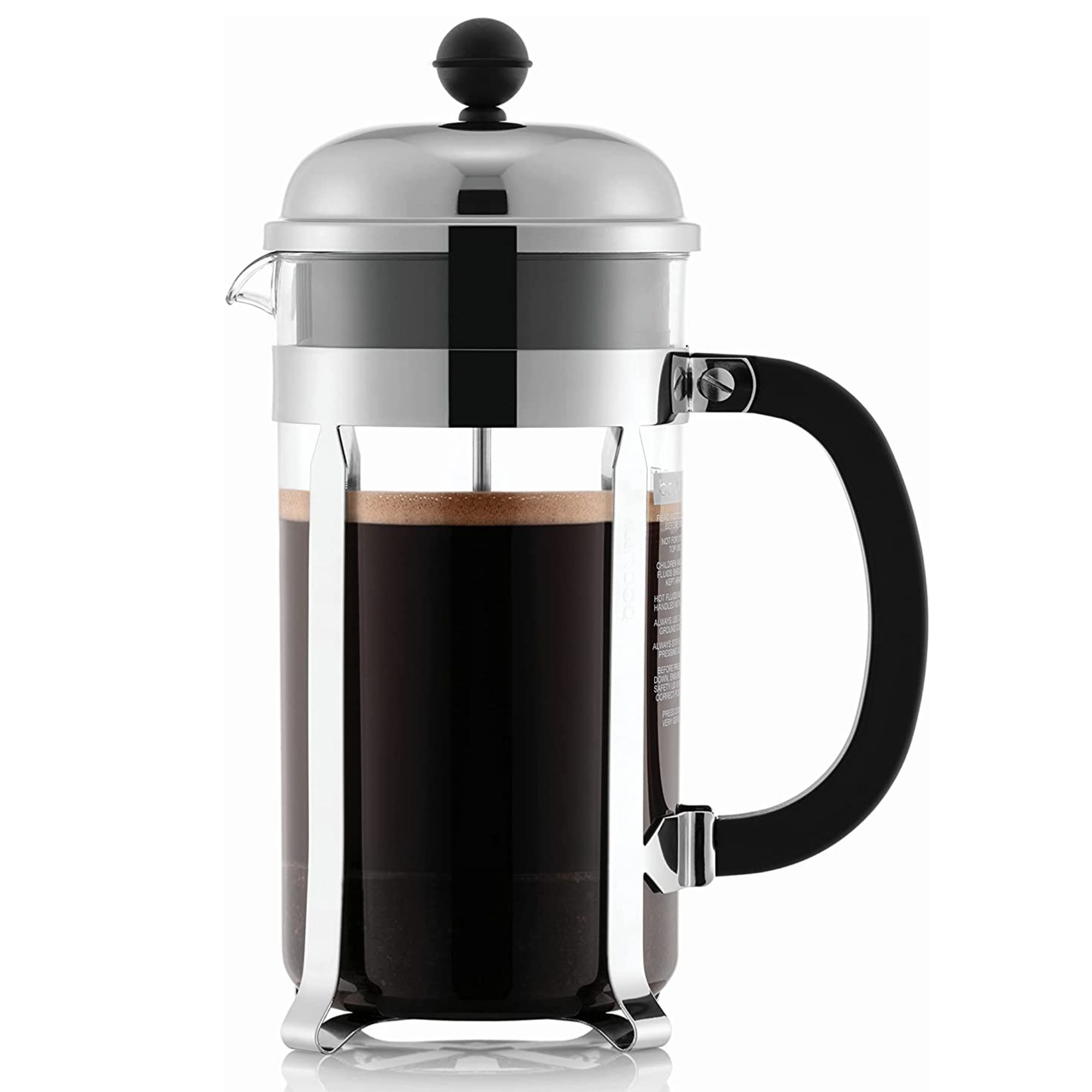
Classy and elegant, the Bodum is a beautiful French press. It's easy to use and clean, with a double filter that helps to deliver a smooth cup of coffee. It's a very fair price for the quality.
Our full Bodum Chambord review.

Fellow products never fail to deliver on quality and design. The 360-degree pour spout, non-stick interior, and ratio aid lines make this a well-designed, luxurious addition to your coffee collection.
Our full Fellow Clara review.
Best pour over coffee maker
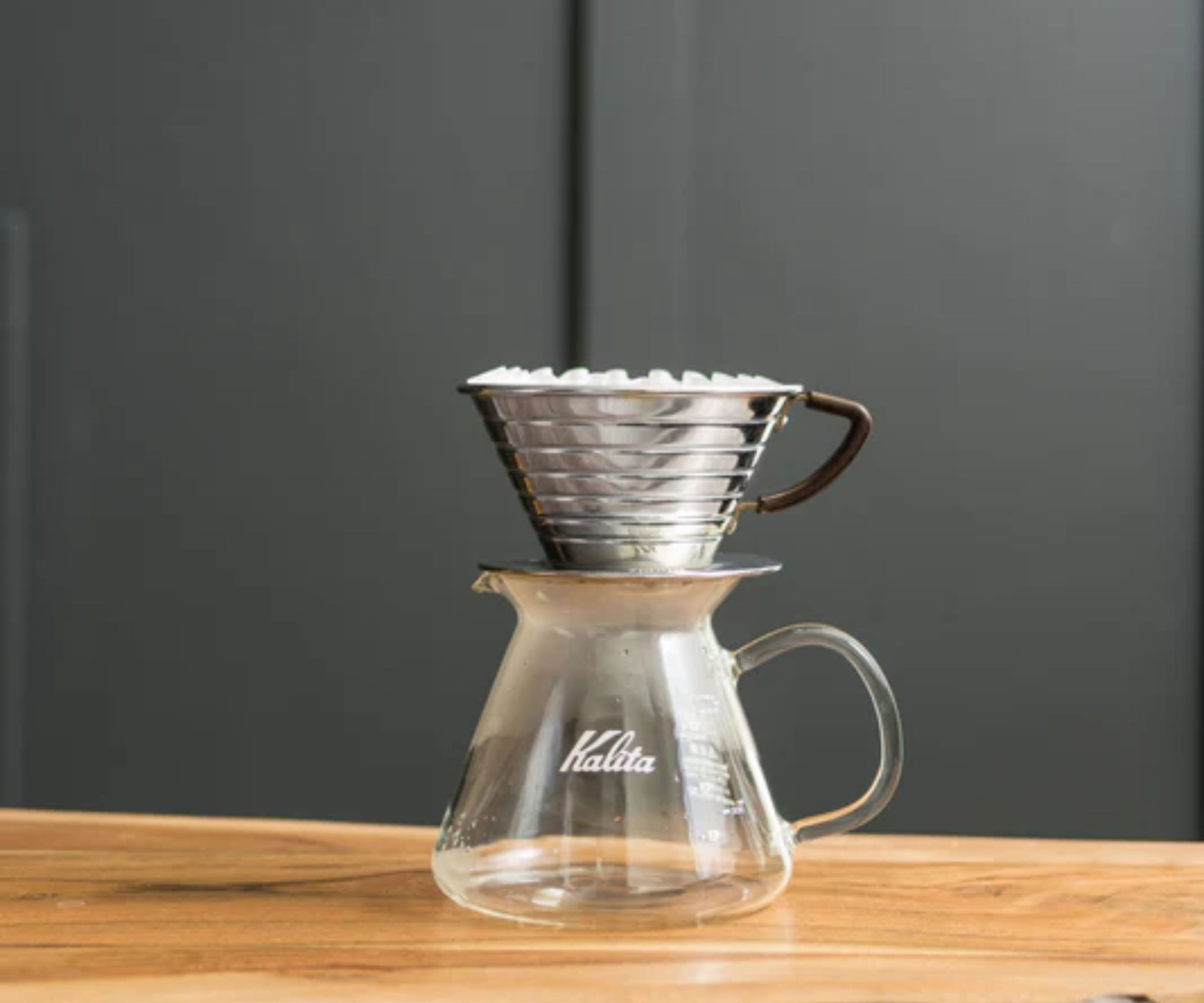
If you like delicate, aromatic coffee, a pour-over coffee maker is an excellent option. Sit a filter paper in the cone, place your coffee grounds in the funnel, and pour water over it, to enjoy what many consider to be the most dynamic flavor when it comes to coffee. What are cons to some with pour over are pros to others – it really depends if you like the mindful ritual of making coffee, slowly.
Pros are that this is an excellent option for the price-conscious, since these tend to cost no more than $50. If you're careful, they'll last a lifetime too (and if you're not, make sure to opt for a metal pour over, rather than porcelain or glass). You will need filter papers for some of them, so that is an added (though minimal) expense to consider. To look after the environment and your wallet, I'd recommend investing in a reusable filter like this one from Walmart. Pour-over uses no electricity, and some really embrace the involved, manual process, going so far as to hand-grind their own beans, too.
Cons are that this is not a quick brewing process, taking up to 15 minutes. And, you need to understand your coffee tastes quite well before you buy, because simple as the process sounds, there is a bit more going on with pour-over than initially meets the eye. The drain hole size can impact the speed of the brew and thus how much contact the water has with the grounds. One big hole means a speedier brew, but a less even taste. Three small holes lead to a much slower extraction, but a cleaner, rounded taste.
Bypass ridges inside the cone help distribute the water, for a stronger, more balanced coffee. The ridges also help lift the filter paper off the side of the wall, so that your coffee is extracted from the bottom and sides of the brewer. Sound too complicated? A set-and-forget drip filter might be better for you.
Shop my three favorite pour-over coffee maker options below.
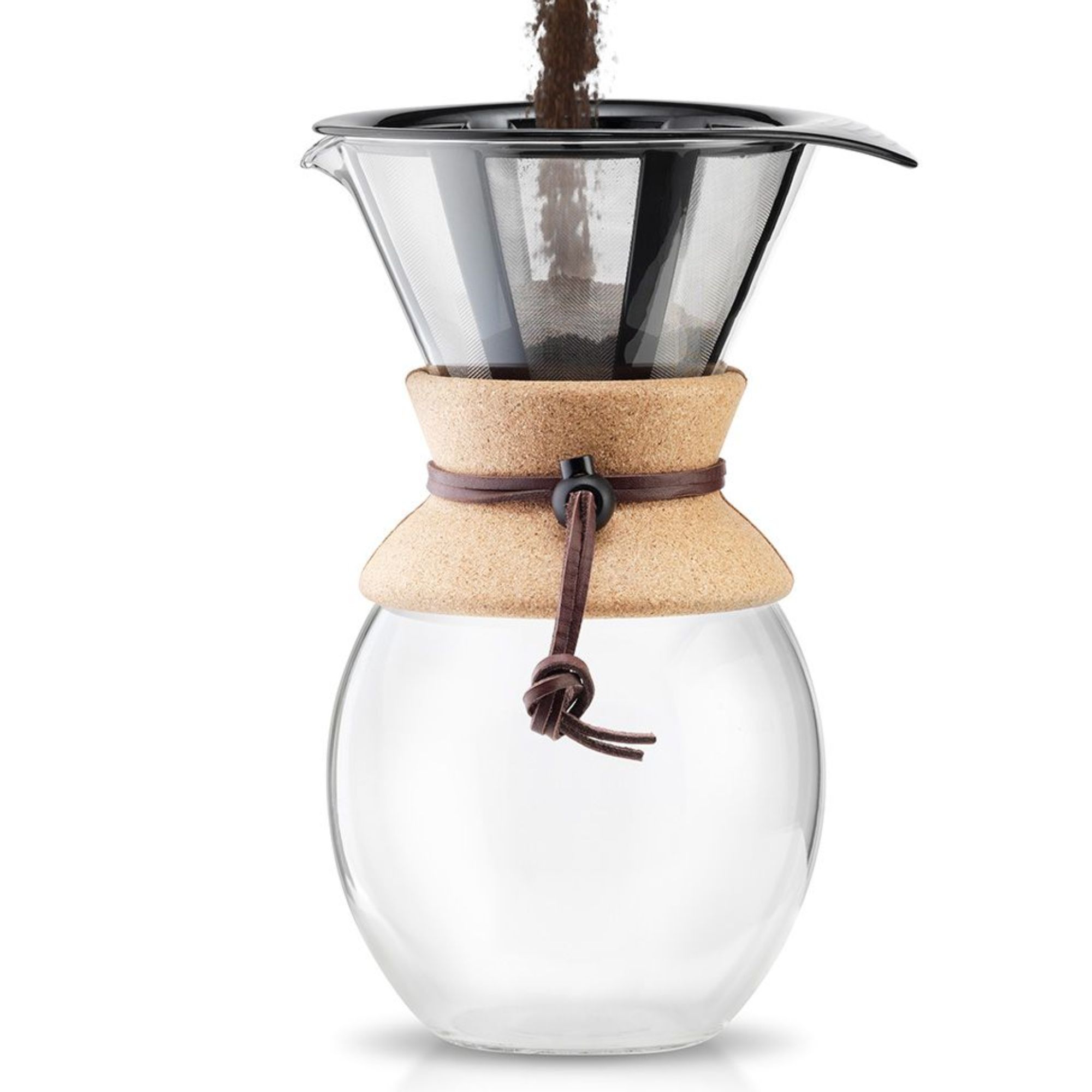
As eco-conscious as it is wallet and design-conscious, the Bodum is an all-round thoughtful pour-over. There's a knack to using it, though.
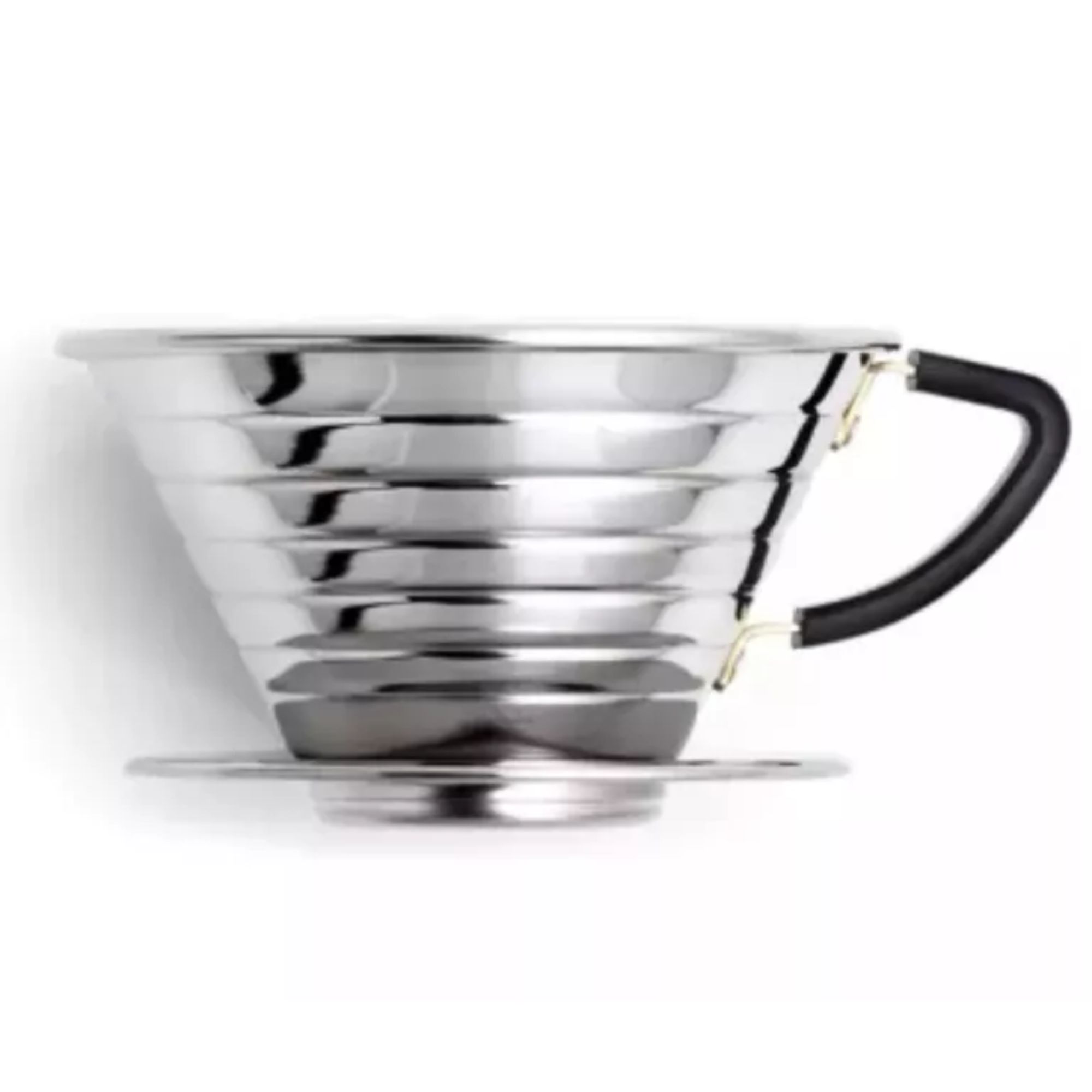
Chic and trusted, the Kalita Wave has established itself as one of the best pour-overs available. The design is traditional, and it produces a really smooth cup of Joe.
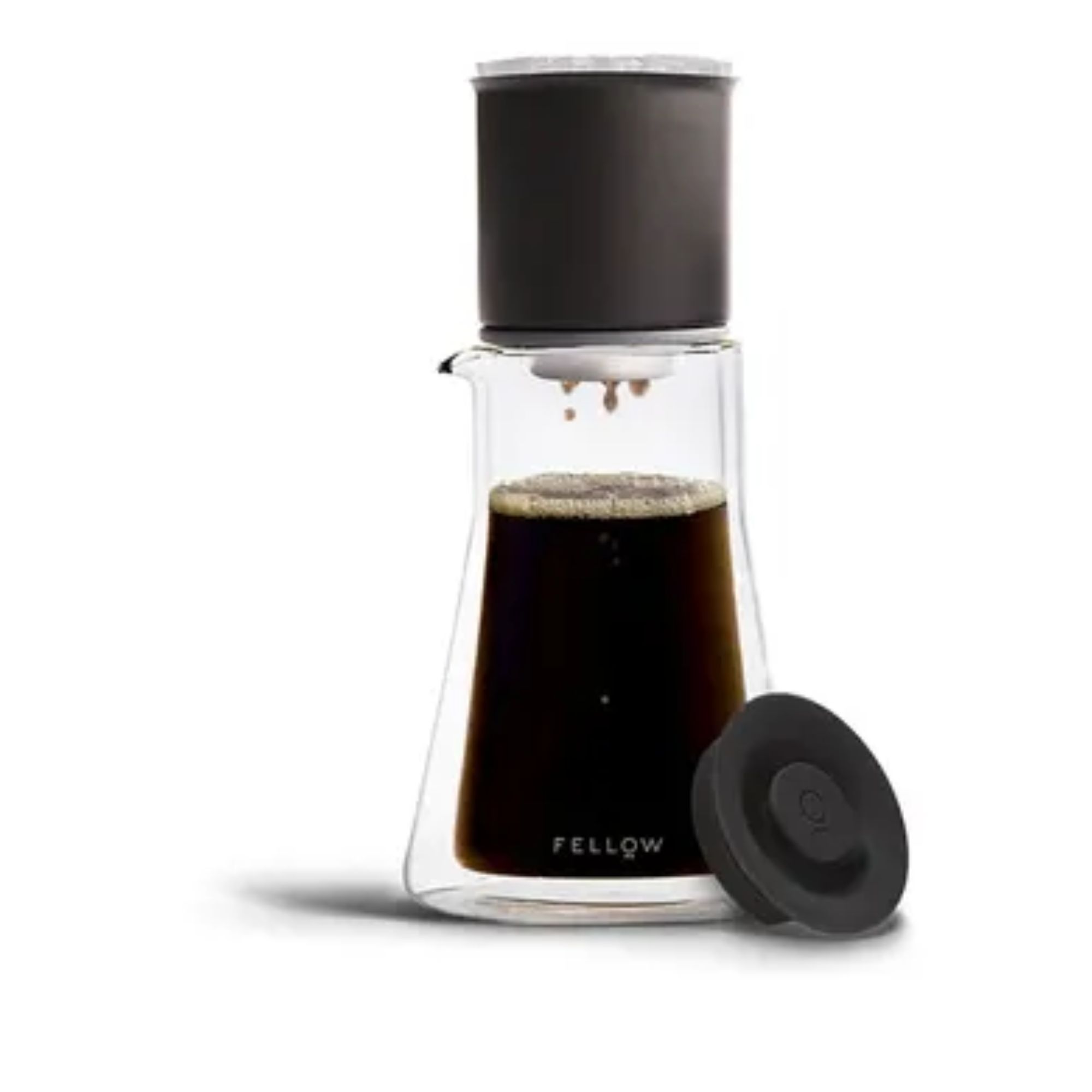
The Fellow Stagg boasts form, function, and excellent insulation. Everything about it is premium, including the price. I also recommend the Hario V60 as a beautiful, retro-style pick if looks are important.
Best cold brew

Cold brew has gained popularity for its smoother, sweeter taste compared to traditional hot brews, with many coffee-haters discovering this to be their gateway drink. Unlike iced coffee (which is just hot coffee cooled down with ice), cold brew is steeped in cold water, creating a velvety, rich drink with minimal bitterness.
Pros are that cold brew makers are relatively affordable, ranging from $30 to $150, so they are easy to add to your coffee-making arsenal without a big expense. They simplify the cold-brew-making process while allowing you to get geeky by controlling filtration. It is said cold extraction really makes the most of some beans, such as medium and dark roasts, so it offers flavors beyond hot brewing.
Cons are that cold brew makers only make sense if you drink a lot of it, as you can use a French press to do the same job (though it may take 16 to 24 hours). It is also worth pointing out that some brands like Nespresso and Breville have added a cold-brew setting to their coffee machines, so investigate multifunctional makers first, unless you have storage space for various coffee machines.
Shop my favorite cold brew makers if you know this is the machine for you.
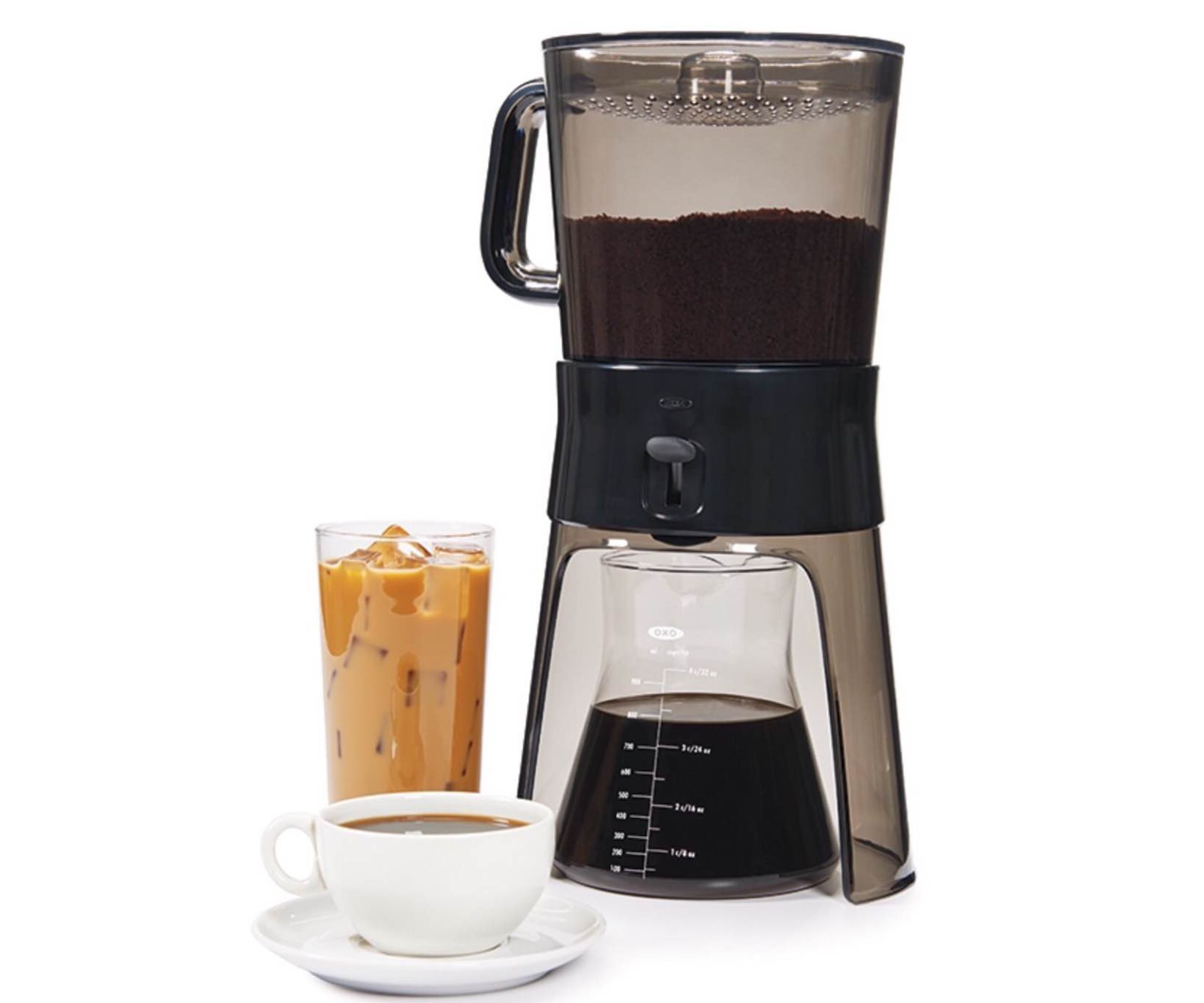
This is an easy win. The Good Grips made the best cold brew we've ever had (even in a coffee shop). It looks smart, it's easy to use and makes consistent cups of cold brew. Plus, you can store any leftovers by putting the carafe in the refrigerator.
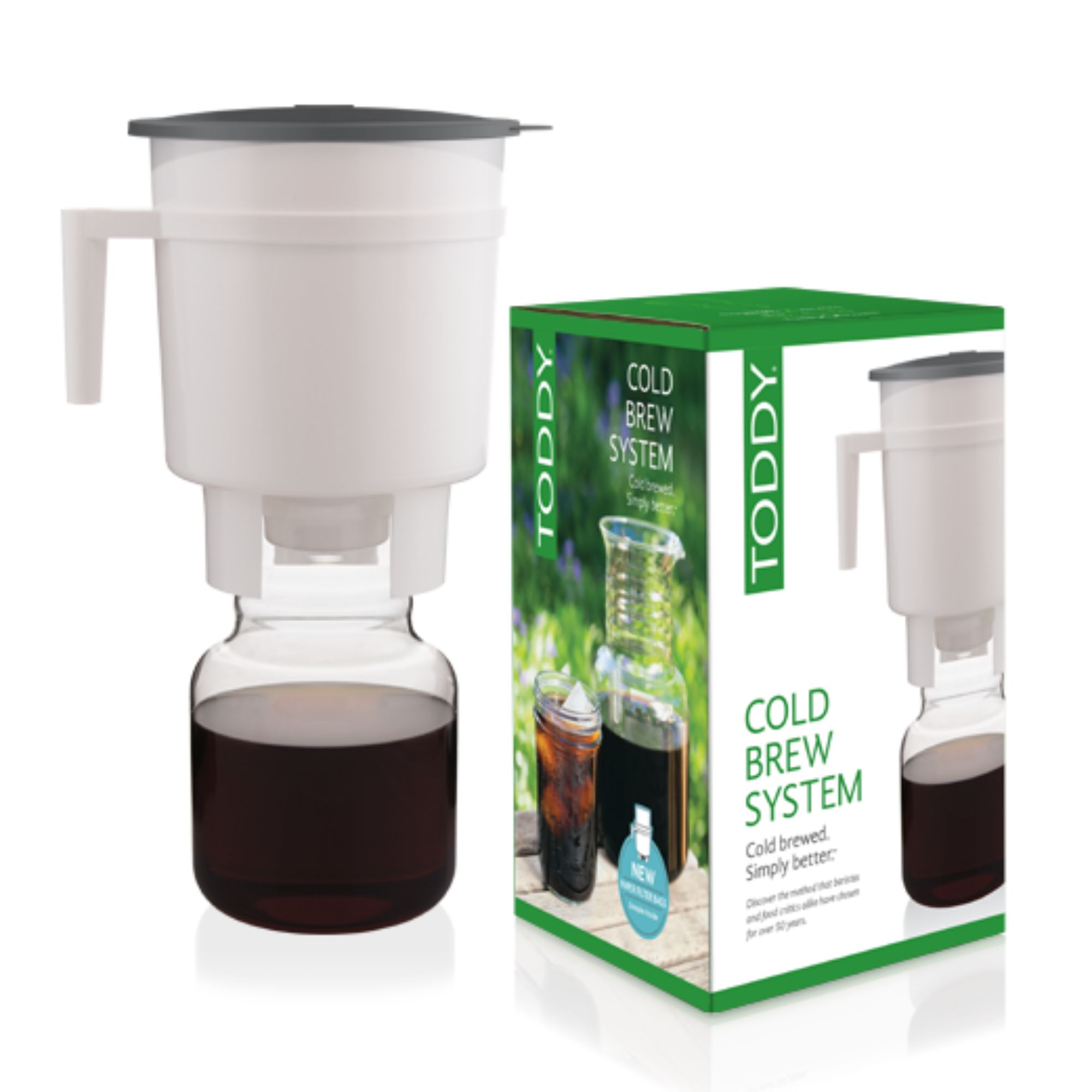
Iconic amongst cold brew drinkers, the Toddy system makes cold brews easy. At around $30, it's also budget-friendly. Compared to others, it's a bit plasticky, but if you want a good cold brew for cheap this is your go-to.
Our full Toddy Cold Brew review.
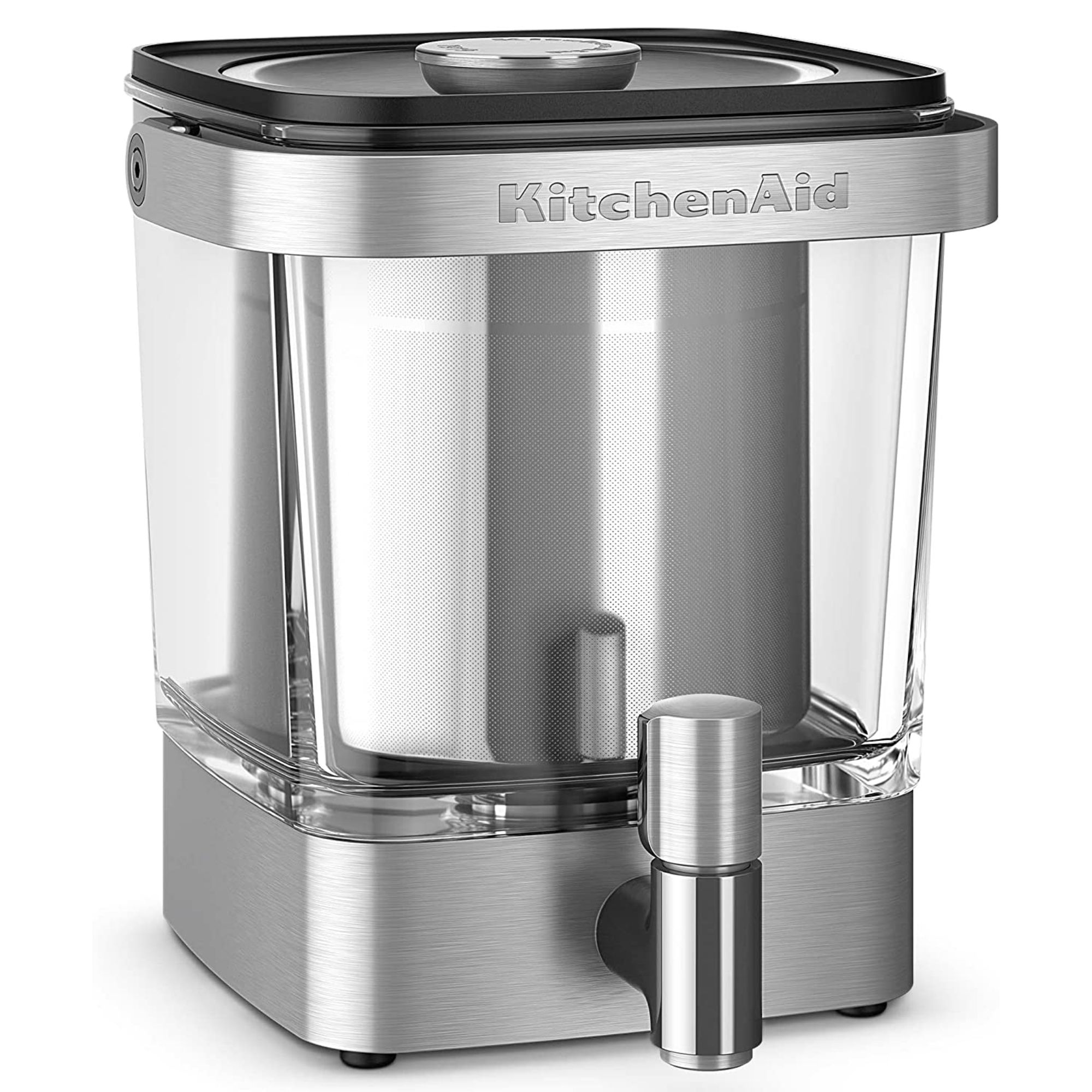
Crafted from stainless steel and glass, this is premium. It sits neatly in the refrigerator and has a useful tap for pouring cold brew, iced tea, or even fruit water straight into the glass. Our expert liked it so much, she bought one for herself after testing.
Our full KitchenAid Cold Brew review.
Best iced coffee makers
Iced coffee is more of an after-treatment than a brewing method. A shot of hot espresso is left to cool, or cooled with ice and water to make a cold take on our favorite hot beverage. It therefore differs from cold brew because while that undergoes a long, slow extraction method – resulting in a smoother, mellower taste – iced coffee has the punch and acidity you would expect from espresso. You can also cool your shot with cold milk, adding syrups and spices to create the coffee-shop-worthy iced lattes we all love on a hot summer's day.
Pros are that an iced-coffee maker can cut the time it takes to make cool espresso for your iced drinks.
Cons are that while there have been a few dedicated iced coffee makers brought out over the years, unless you only drink iced coffee, you are much better off making it with an espresso machine (be it automatic, moka pot, or even a handpress). The Nespresso Vertuo Next is compatible with iced pods and cold brew pods if you prefer the ease of a single-serve machine. Below are three machines that have settings, tools, or add-ons to make iced coffee quicker, easie,r and tastier.
Shop machines with iced-coffee functionality.
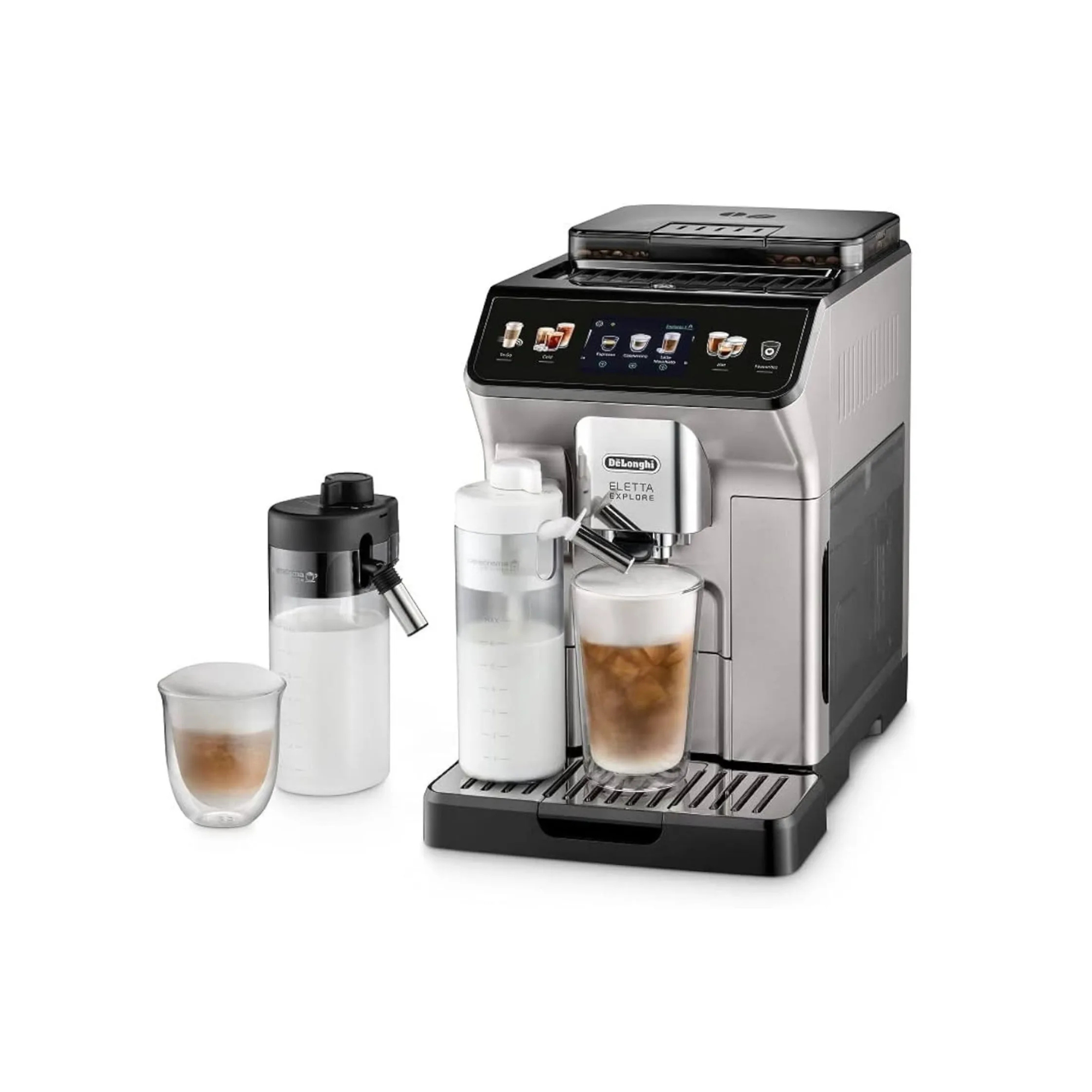
Already listed as one of our favorite automatic espresso machines, the De'Longhi Eletta Explore also offers iced coffee. It comes with a cold foam carafe, so you can make iced lattes at the touch of a button.
Our full De'Longhi Eletta Explore review.
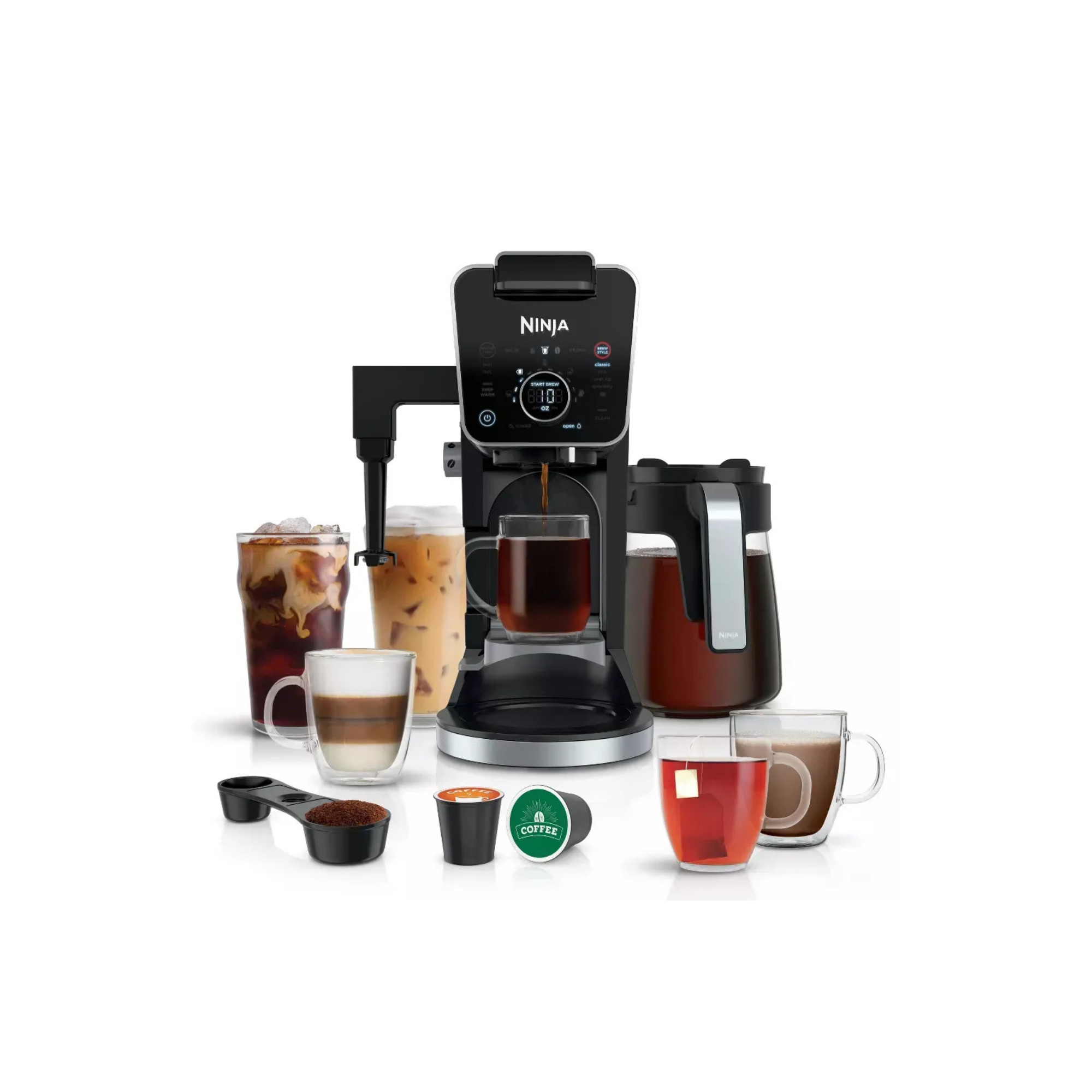
This boasts four different brewing styles (deep, light, filter, and iced), which you can make with fresh or capsule coffee. It makes a good iced coffee, but the other options are not as robust as top-notch espresso machines.
Our full Ninja DualBrew Pro review.
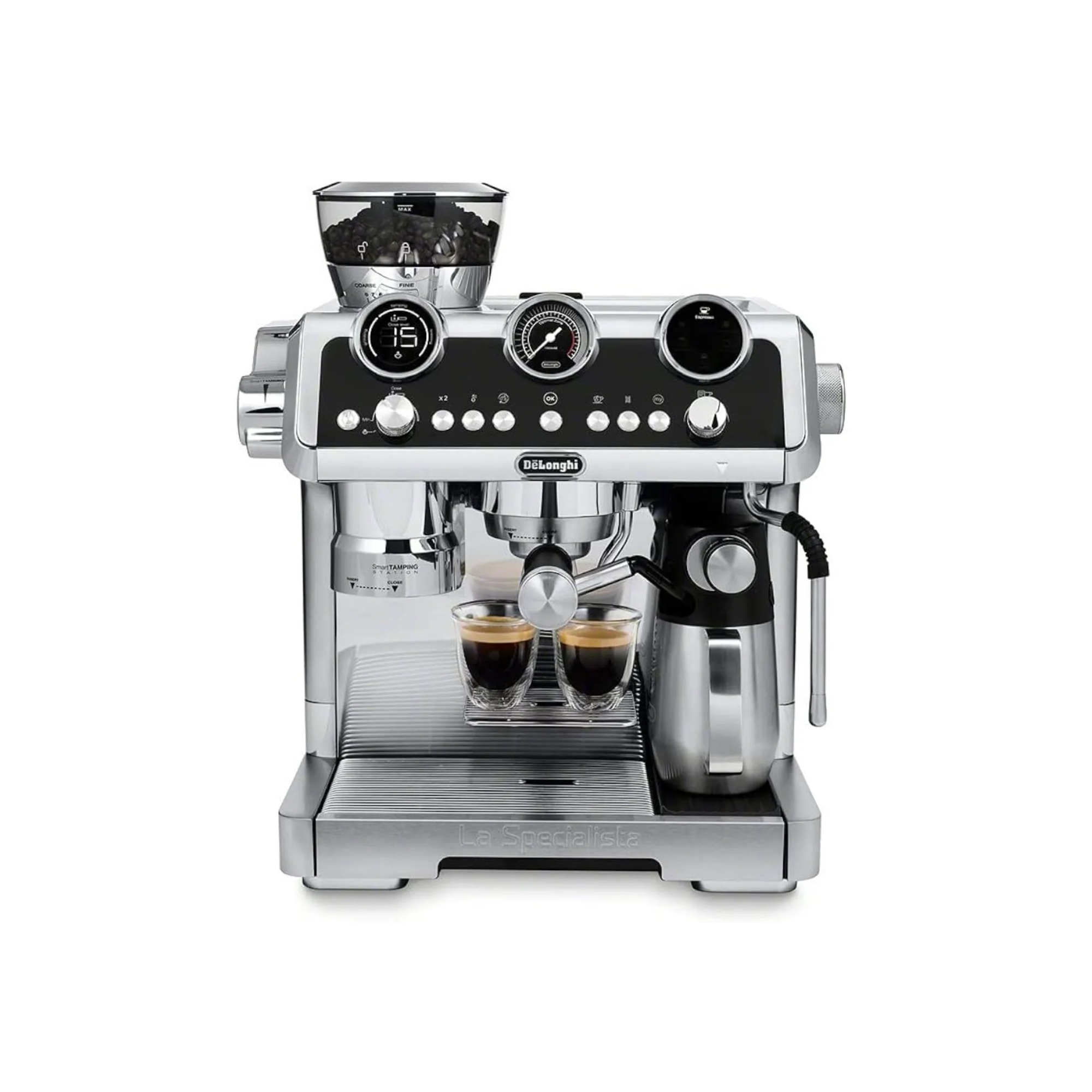
From hot lattes to iced black coffee, you'll have control with this espresso machine. It can't texture milk without heating it too, but it does have cold brew and espresso cooling, so you can make cold coffees without the wait.
Our full De'Longhi La Specialista Maestro review.
What else should you consider when choosing the right coffee maker for you?
As well as brewing preference, a few other factors (before price) may dictate which machine you land on.
Space: If your kitchen is compact, space will be an issue. It’s at this point that you might want to choose a moka pot or single-serve over an espresso machine or automatic coffee makers. A French press is perfect if you have little space and like strong coffee, while a pour-over maker has an equally small footprint and serves milder tastes where there is no room for a drip coffee maker.
Time: If you're normally five minutes late for being 10 minutes late, you'll want a quick machine: pod machines, pre-set drip coffee makers, and automatic machines will be your best friends.
Capacity: Pour-overs are an excellent option for single-cup coffee drinkers. However, if there are 10 of you at home, the best drip coffee maker will cater to the masses.
Ease: If you normally buy your coffee from a barista, an automatic bean-to-cup machine would suit you really well. It'll be just like your barista’s, but without the small talk. If you don’t mind being hands-on, manual espresso machines are at the other end of the scale. They can be a lot of fun, too.
How much should you spend on a coffee maker?
At the budget end, pour-overs and French presses can cost as little as $30. The materials used for these keep the costs low and you definitely shouldn't spend more than $150 on them.
At the top end, espresso machines, especially automatic models can cost as much as $1,500. If you're happy to be more hands-on, you'll be able to pick up a model for around $500, just don't expect any automation or a grinder.
In the middle, you'll find drip coffee makers. If you've got about $200-$300 to spend, you'll be able to get a quality model. These won't have integrated grinders, so set aside some budget for that (more on grinders below).
The bigger your budget, the more convenient and versatile your coffee maker, so set expectations for what you want and what you're happy not to pay a premium for, and choose carefully.
Additional features and functions
Do you want to be able to make just espresso, or long milky drinks too? If the latter, you will need something to heat milk, such as a steam wand or milk frother. Do you want cold coffee without having to wait for cooling? A cold brew or cooling function for iced coffee will be essential. Do you want it to have smart capabilities to remember your favorite drink and set programs to make it? Look for an automatic espresso machine with this option.
On the other hand, some people want a stripped-back, mindful brewing experience, which is exactly what you get with moka pots, pour-over, and French press makers, though they come with their own optimisations too.
With or without a coffee grinder?
To extract the flavour from coffee beans, those beans first need to be ground. You can buy pre-ground coffee from the stores, but as soon as the beans have been ground up, the delicious oils in them start breaking down. Freshness plays an immense factor in the flavors of your coffee, so buying ground coffee tends to be less suited to espresso makers, but it can be of use to those drinking large volumes of drip-made coffee, as it is convenient.
As well as ground coffee being less vibrant than fresh grounds, you might want more control over the grind size, as this impacts the extraction of the coffee. Real coffee pros like to have control over this to optimise their brew to their specific tastes.
So, if you want to choose your own beans and grind them, you are going to need something to do this. One option is to choose the best coffee grinder. This will give you complete freedom to grind the exact amount you need, when you need it, for the freshest taste. However, if you have a small kitchen, you might be concerned about the required countertop space for an additional appliance. This is where coffee machines with inbuilt grinders can be a great choice.
One machine that does it all is a dream for anyone looking to save time, money, and counter space. Most of these machines let you tweak grind size, brew strength, and temperature, too – so, whether you love a hot, strong espresso or more mellow brew, you can make your coffee just the way you like it.
A good coffee maker with a grinder starts at around $700, but they can cost up to $2,000. Those with a conical burr grinder tend to cost more than a spinning blade, but they are quieter and more efficient. Weigh up whether noise will be a bit problem in your kitchen or not.
Read more about the best coffee grinders, or shop a machine with one built in below.
Best coffee makers with integrated grinders

True to its name, this makes professional coffees. It has over 30 different grind settings and a pre-infuse function too. You'll feel like a barista, but it can get a little noisy.
Our full Breville Barista Pro review.
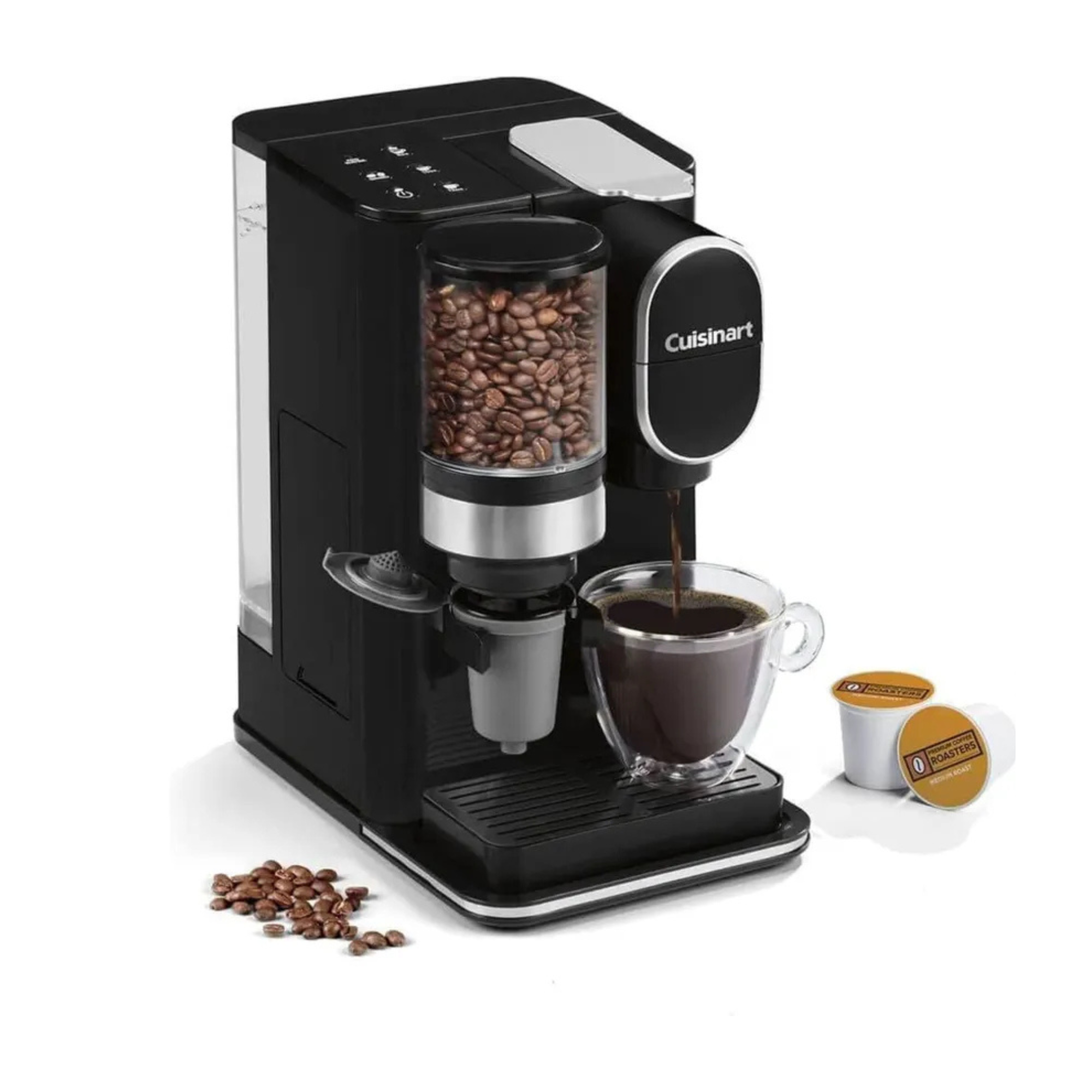
If space is a concern, you'll love this Cuisinart. It blends freshly ground coffee with single-serve speed. The coffee quality is excellent, it’s easy to use, and ideal for small apartments or budgets.
Our full Cuisinart Grind & Brew review.
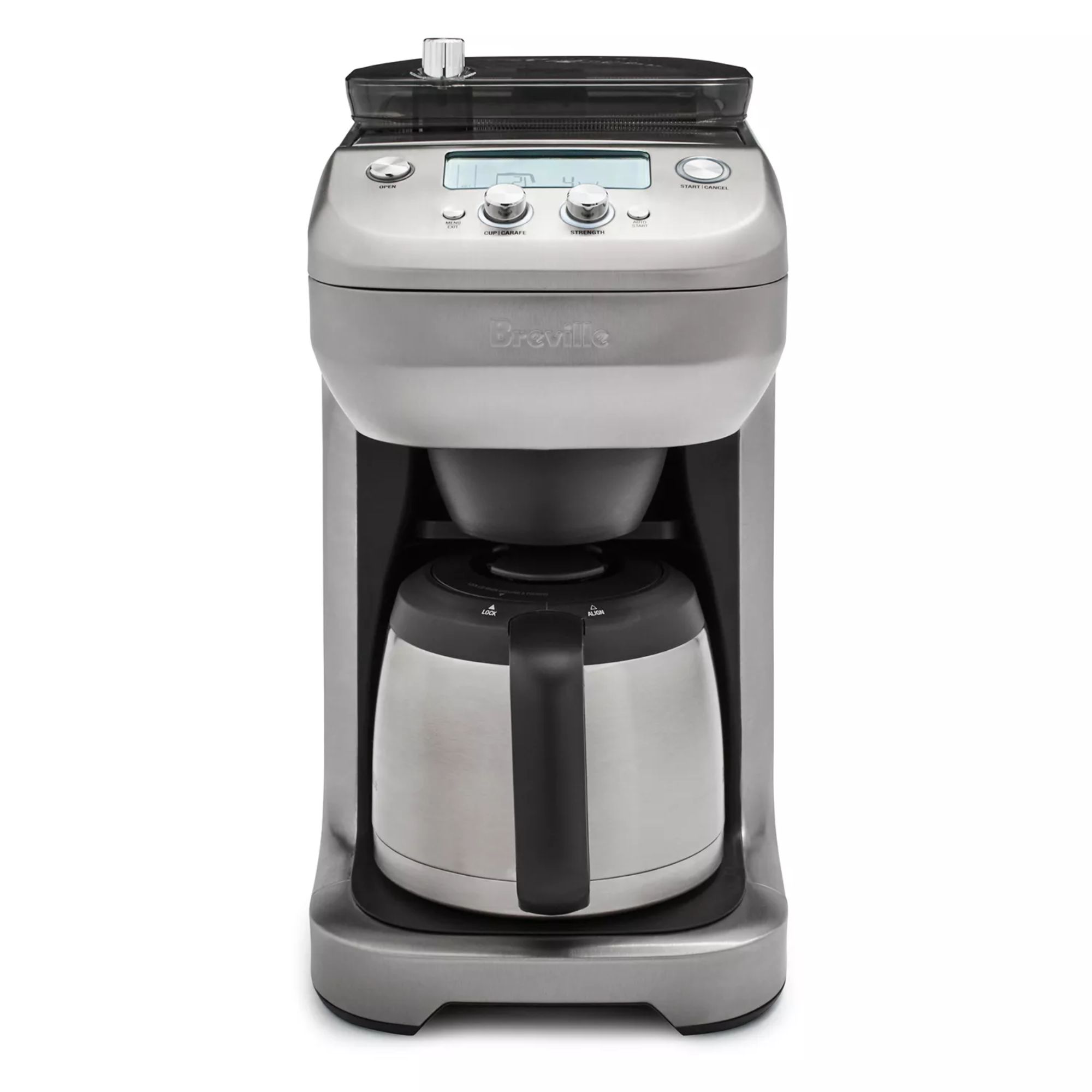
You won't get a better drip coffee and grinder combo than this. It can brew everything from one cup to a twelve-cup carafe, which is great for large families or guests. The only thing it can't do is make espressos.
Do you need a milk frother?
If you like lattes, cappuccinos, and other milky coffees, then you will need something to steam and foam your milk. You can heat milk on the stove, then use a small electric whisk to foam it, but the results are not great. We always recommend a steam wand (usually as part of your machine) or a separate milk frother.
Milk frother vs steam wand
Whilst steam wands and milk frothers essentially produce the same results, they are different in many ways. A milk frother will do exactly as the name suggests and froth milk. The process is quick, simple, and starts at the touch of a button. A good milk frother can create different amounts of froth at different temperatures (hot and cold), depending on the one you have.
The alternative to a milk frother is a steam wand, also called a 'milk steamer'. Kaya Stavridis, a former Starbucks barista, explains that these gadgets are 'often an integral part of espresso machines. Milk steamers use steam to heat the milk while simultaneously incorporating air, resulting in a velvety, textured foam that's ideal for lattes and flat whites. The steam not only froths the milk but also increases its temperature, creating a sweet and creamy addition to your coffee.'
Steam wands require more skill, so if you're a beginner, you'll probably have some inconsistent results. A milk frother delivers the same results every time, which is great if you're not confident, but can be limiting when you want to brandish some barista skills. The precision of these gadgets means that you can make 'microfoam'. This means that your bubbles are really tiny, making the milk feel and look smoother (a bit like glossy paint). It lifts and balances the texture of an espresso well enough to wiggle it through your coffee colors, making leaves, flowers, love hearts, and more.
A milk frother is a lot easier to use because it's just whisks, electric coils, and buttons. Even if you have no experience with texturing milk, you'll be able to achieve consistently good results. Plus, milk frothers can make cold foam for iced coffees. The heating element of a steam wand means that cold foam is off the table.
If you like the sound of a steam wand, get a machine with one built in (see the best espresso machines for this option). If you prefer the ease of a milk frother or want to make cold foams for iced drinks, or easy, push-button hot chocolate, check out the best milk frothers we have tried and tested.
Best milk frothers
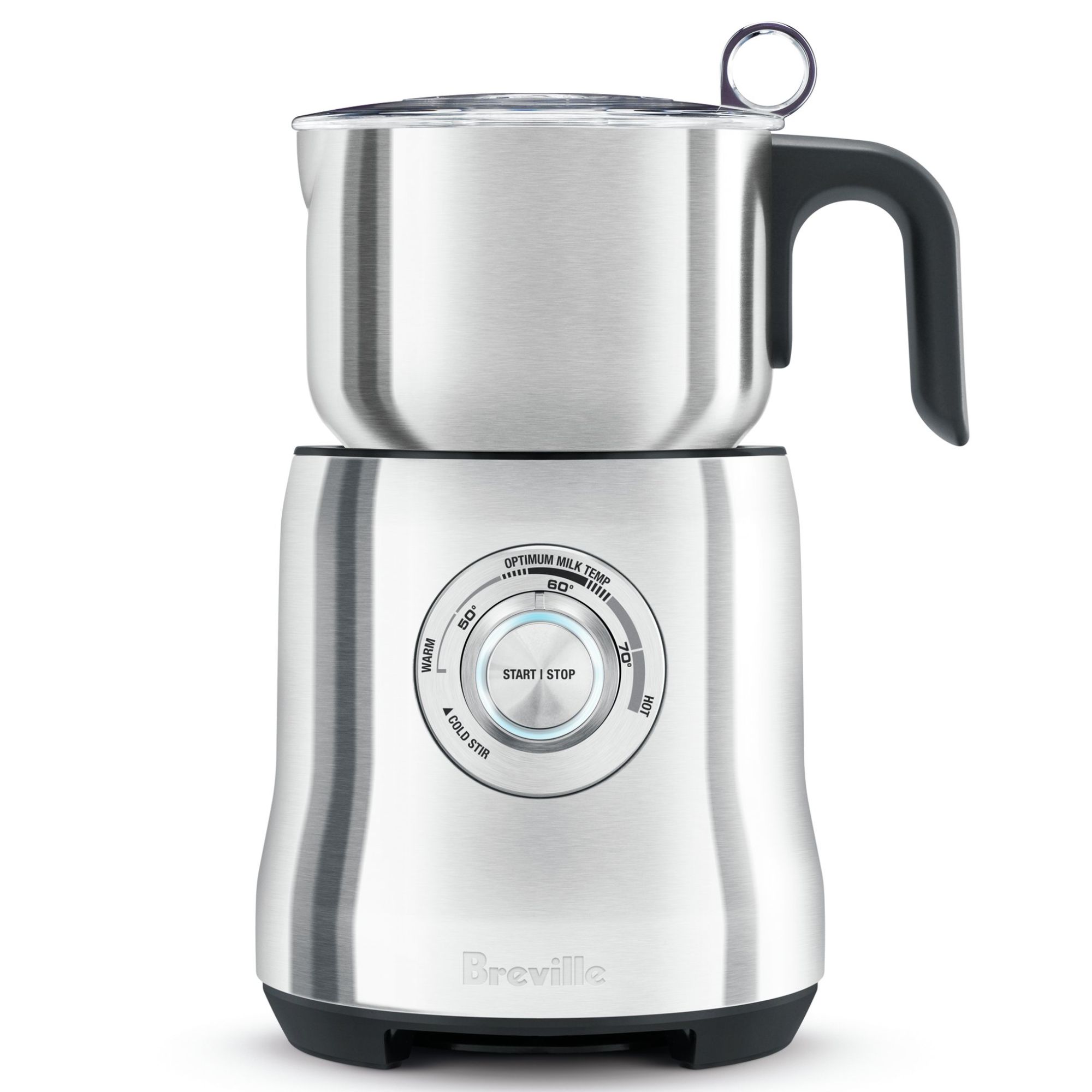
This professional model can froth milk between 120 and 160 degrees Fahrenheit at a range of textures. The only drawback is that it can't create cold foam.
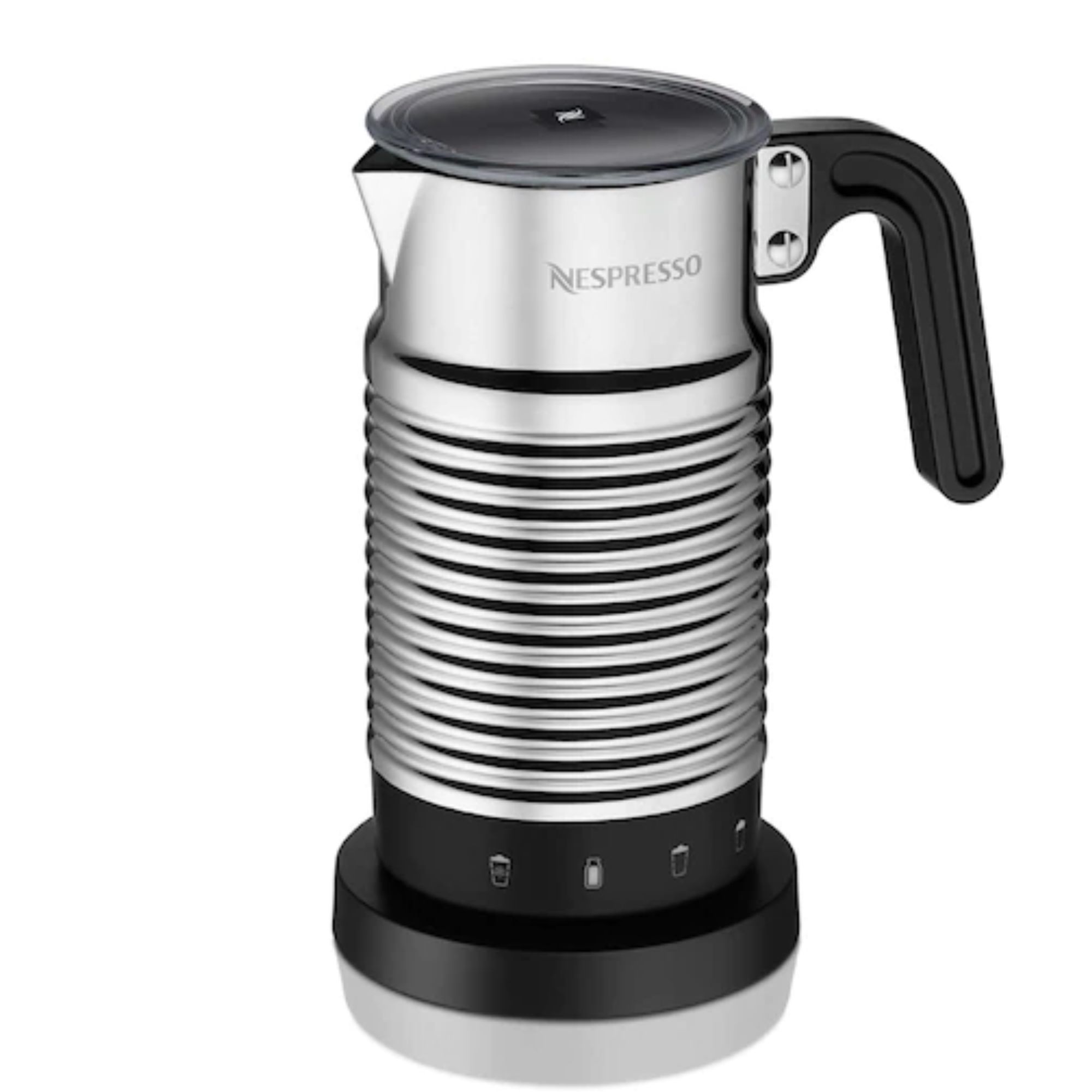
Super fast and ultra silent, the Aeroccino is one of the most popular models on the market. It's good with both hot and cold foam, but has no temperature control.
Our full Nespresso Aeroccino 4 review.
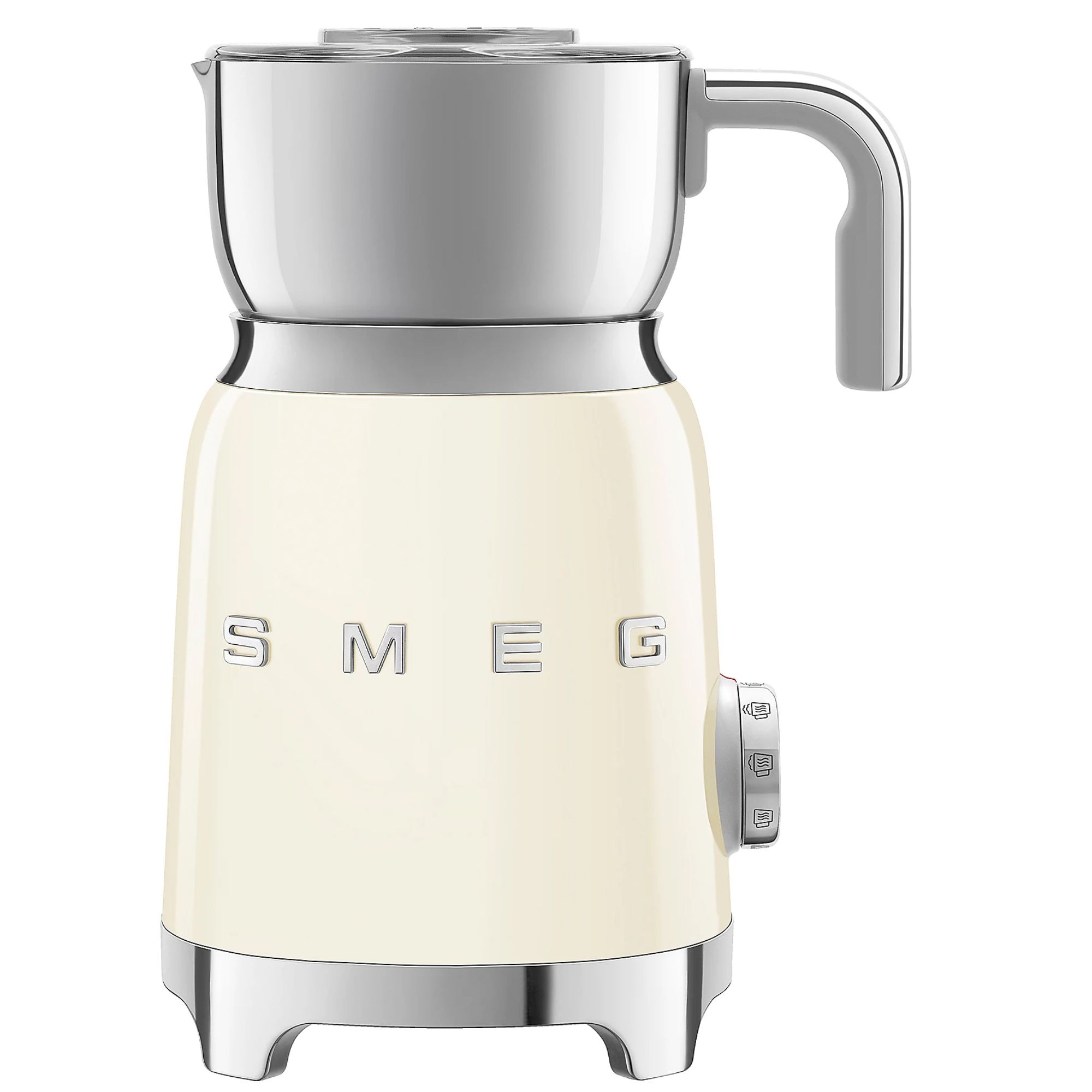
There's only one place to look for pastel colors and glossy finishes: Smeg. Their expensive, retro milk frother is beautiful, and does cold foam, but doesn't always whip up the smoothest textured oat milk.
Our full Smeg Milk Frother review.
How we test
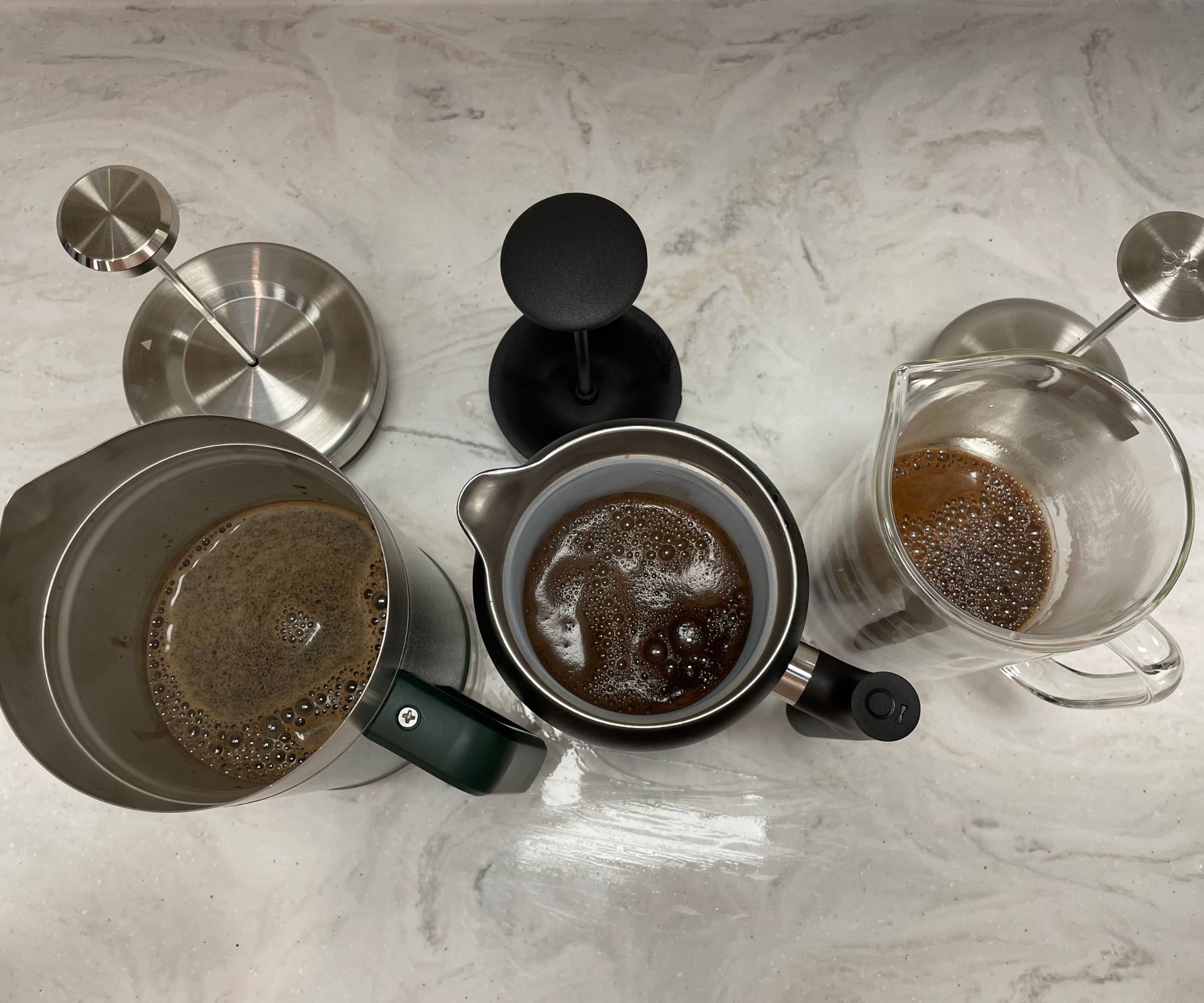
At Homes & Gardens, we have a rigorous testing process for all of our coffee makers. This enables us to score coffee makers both individually and against other models on the market. Everything in this guide has been tested and scored within its category. We have linked to the full reviews so you can read more about the process and how they performed. Here is a summary of our methodology for testing coffee makers.
Research: As Homes & Gardens' kitchen appliance expert, this is my starting point. I'm always on the lookout for the best coffee makers on the market, so I will connect with the market leaders on their newest releases. Once I’ve found one that I think you, our readers, will like, I order it to my home kitchen.
Testing: I usually like to test at home, as it means I can use the appliance in my regular routine for around a month. This helps me uncover advantages (and pain points) I would never discover with a one-hour session in the test kitchen. We then take some machines to our group test kitchen to get further opinions – and to really put them through their paces over time.
Design: Once the machine is in my hands, I first consider the design and build quality. I give extra points to coffee makers that look good on the counter, but I never prioritize style over substance.
Brewing performance: The first thing I make with any espresso machine is an espresso. This is a way of testing how good a coffee maker is at the basics. A good espresso should be between 1.25-2 oz. It should be 190-205 degrees and full of flavor. A big giveaway is the crema on top: that should be thick with a hazelnut hue.
Then, I'll test other brews: including americano, latte, cappuccino, and anything else the coffee maker has to offer.
Cleaning & ease of use: After brewing and tasting, I make notes on the clean-up process as well as how I would recommend storing and maintaining the coffee maker. I also think about how easy it is to use and what type of coffee drinker it would suit.
Value for money: After a month of testing and evaluating, I have rounded up my notes. Then, I take a look at all of our other coffee makers to see how they compare. I also look at online reviews to see what other experts and real-life customers thought, so that I can bring you more insight. After this, I give each coffee maker a score out of five. Only the five-star appliances make it into my best coffee maker buying guide.
If you’re interested, you can find out more about product testing at Homes & Gardens.
Meet our testing team
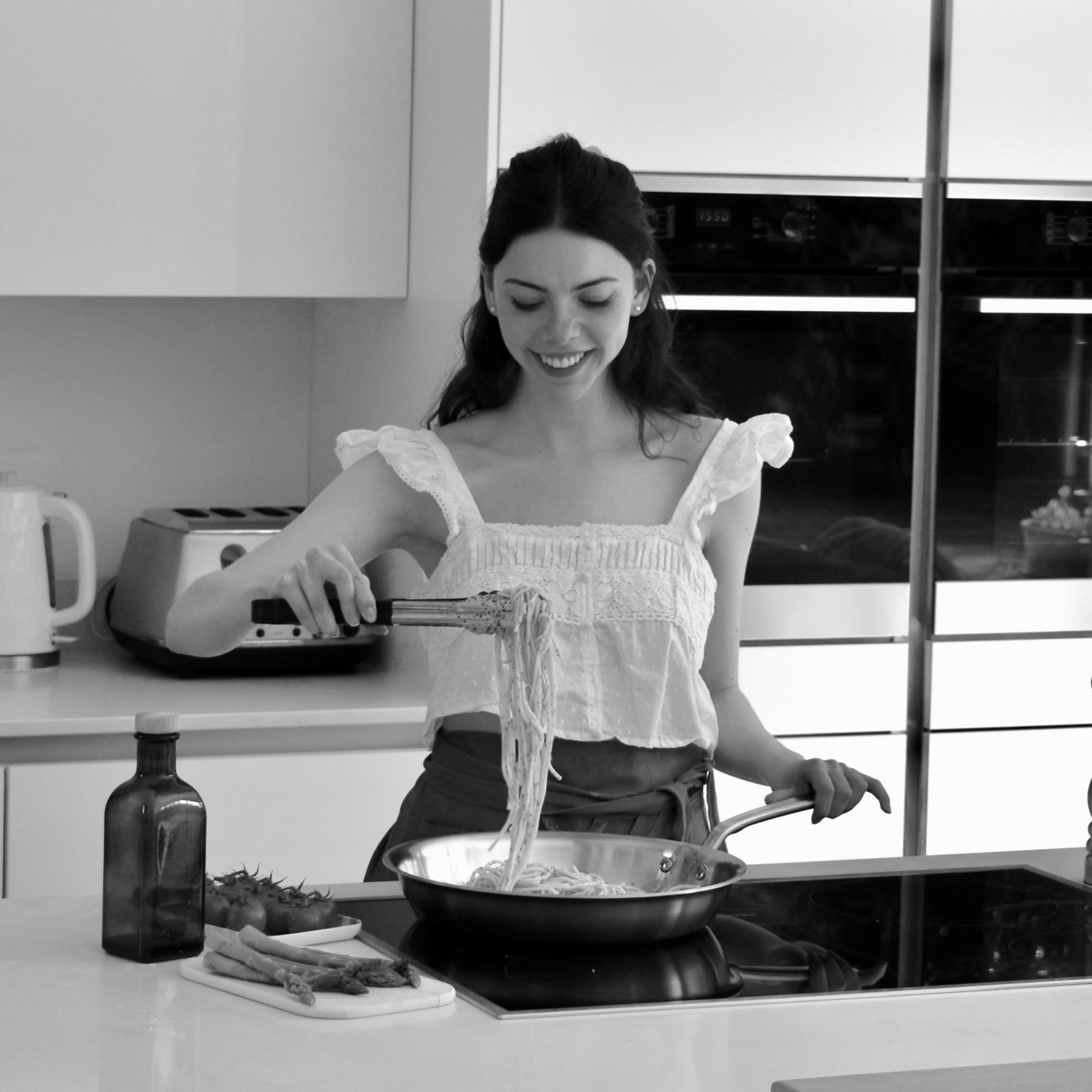
I'm a trained cook who loves coffee. To boost my knowledge, I attended masterclasses at Illy's University of Coffee, shadowed professional baristas, attended coffee masterclasses, and toured roasteries to master the art of coffee. My hot drink of choice is a frothy, Italian cappuccino (alongside a croissant, of course). I've tested coffee grinders, makers, and milk frothers and made countless cups of coffee along the way, so I know that the best coffee maker is an incredibly personal choice.

Laura has tested over 60 coffee makers for Homes & Gardens and used to look after our coffee content before moving to cover appliances on Woman&Home. As a fully qualified barista, she's our expert in all things coffee – and she's even delved into matcha, too. She has also interviewed Q-Graders and world-leading experts in the coffee industry, so she has an intimate knowledge of the industry.

Jaclyn is a home product tester and eCommerce editor. She has also written for foodie publications like The Kitchn and The Spruce Eats. Jaclyn was a particular fan of the Techniform Moccamaster coffee machine she tested, which is our luxury pick in the best drip category. She says: 'It brews some of the most distinctive, memorable coffee I've ever had at home, and perhaps even out and about at cafes.'
FAQs
How to tell when your coffee maker needs replacing
If your coffee maker stops working altogether, and you can't get it repaired, that is a clear sign that it is time to buy a new one. But there are subtler signs that your machine is on its way out, or due for an upgrade.
'The average lifespan of a coffee maker is about five years, but high-end models may last ten or more,' says Christen da Costa, CEO of Gadget Review. 'But while modern coffee makers don’t need to be replaced as often, there will come a time when your morning coffee leaves something to be desired.'
Any technical faults should be addressed as soon as they begin. We are talking water dripping where it shouldn't be; funny noises in the brewing process, or any notable cracks or damage. Oftentimes, smaller parts like washers and filters can be replaced at low cost, so always do this first (for your wallet and the planet).
'Excessive leaks or cracks in the water reservoir also signal age and wear. When basic cleaning and descaling can't resolve issues, it's time to retire the coffee maker and purchase a new one for the best quality drinks,' advises Johny Morrisson, coffee expert at Coffee About.
A shift in taste should also be looked into. Limescale build-up will be one cause, and can be terminal for a machine that hasn't been properly maintained. This can also be spotted from longer-than-usual brewing times or reduced brewing performance.
'This could also indicate limescale build up and reduced heating ability - a sign the machine is wearing out,' adds Johny Morrisson.
If your coffee tastes burnt or feels lukewarm, it's a clear sign that the machine is not maintaining the right brewing temperature. The ideal brewing temperature is between 195°F and 205°F. Anything outside this range can compromise the taste, indicating your coffee machine is past its best.
Alternatively, metallic or plastic notes in your coffee are a sign that internal parts might be breaking down. Replace them, and if the taste persists, it might be because of something that can't be repaired.
Finally, just like cars, coffee makers show their age when they start to need increased maintenance. If there comes a time when your next repair job means you have nearly spent the cost of a new machine, it might be time to retire it to the local recycling centre.
Remember, knowing how to clean and maintain your coffee maker is crucial for enhancing its lifespan. And, many troubleshooting missions begin with a good clean.

Lydia is the Kitchen Appliances Editor for Homes & Gardens, testing everything from air fryers and mixers to juicers and coffee machines. She trained in Culinary Arts at Leiths School of Food & Wine and previously served as the Recipe Editor for Mindful Chef.
- Laura HoneyeCommerce Editor